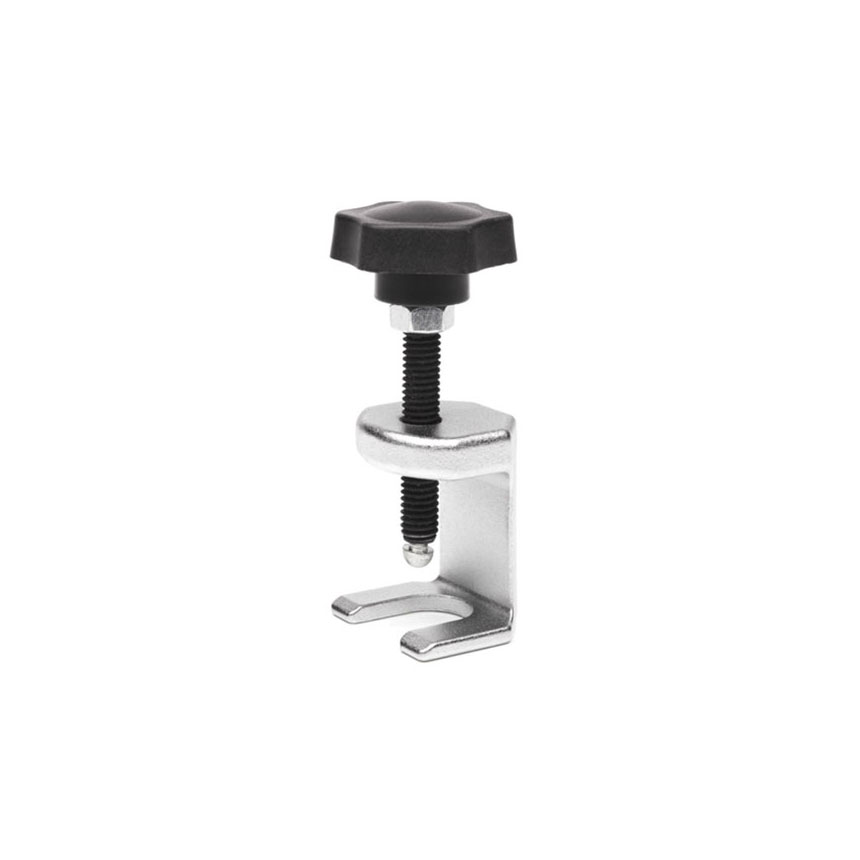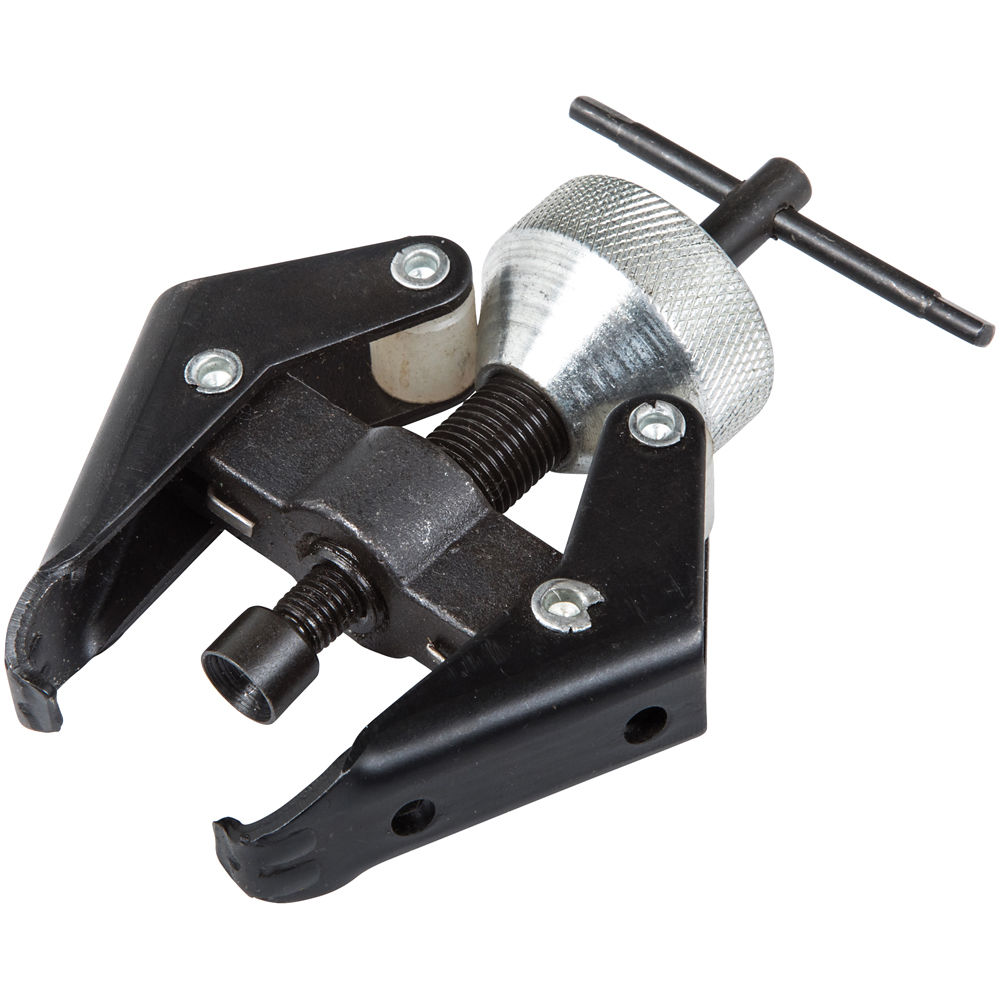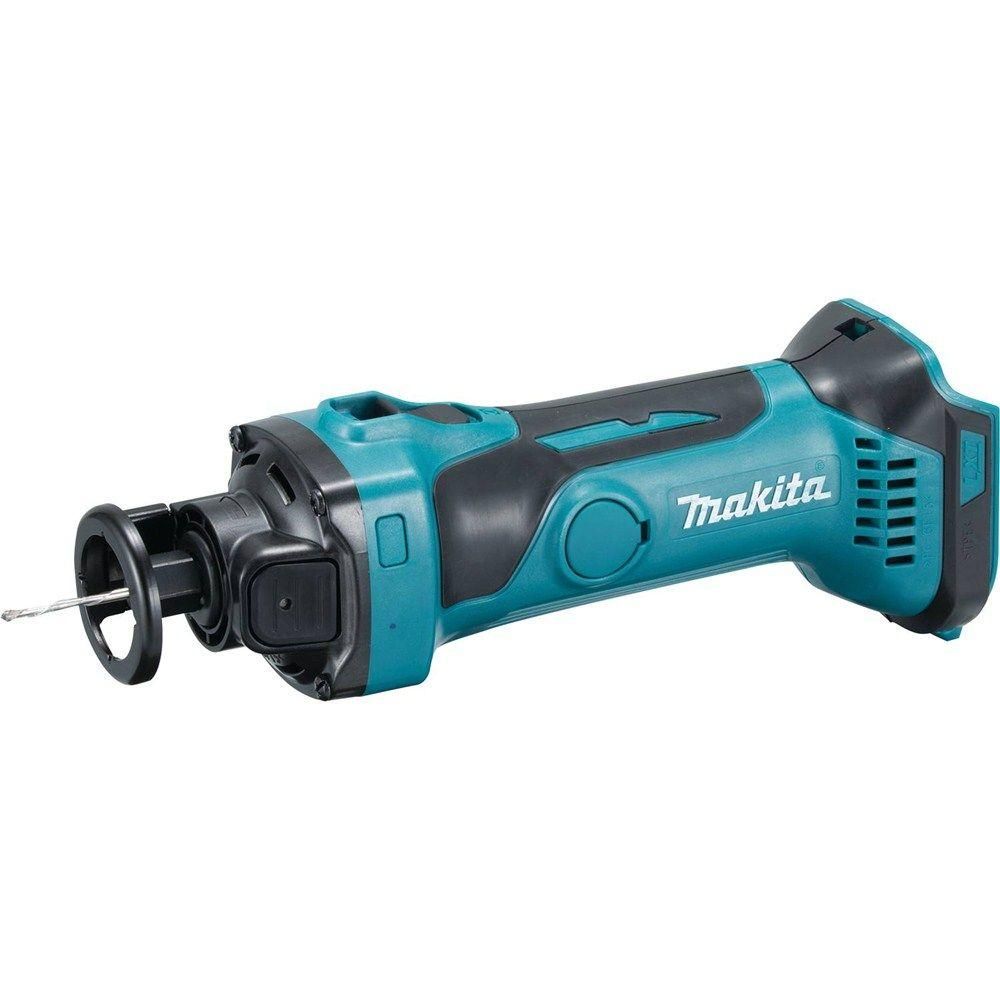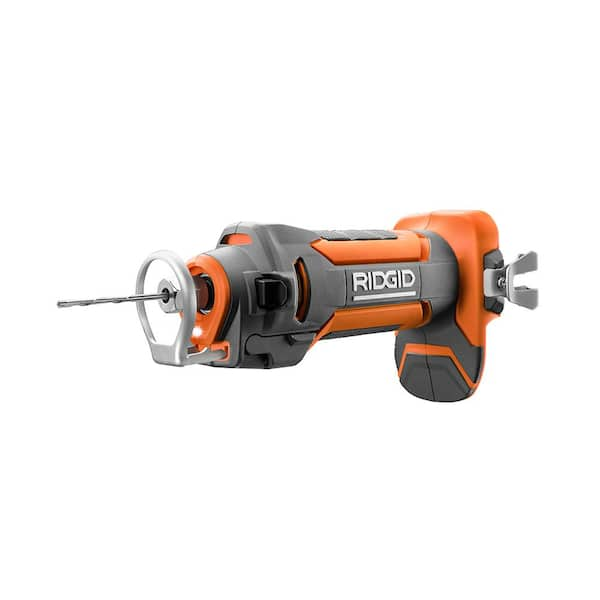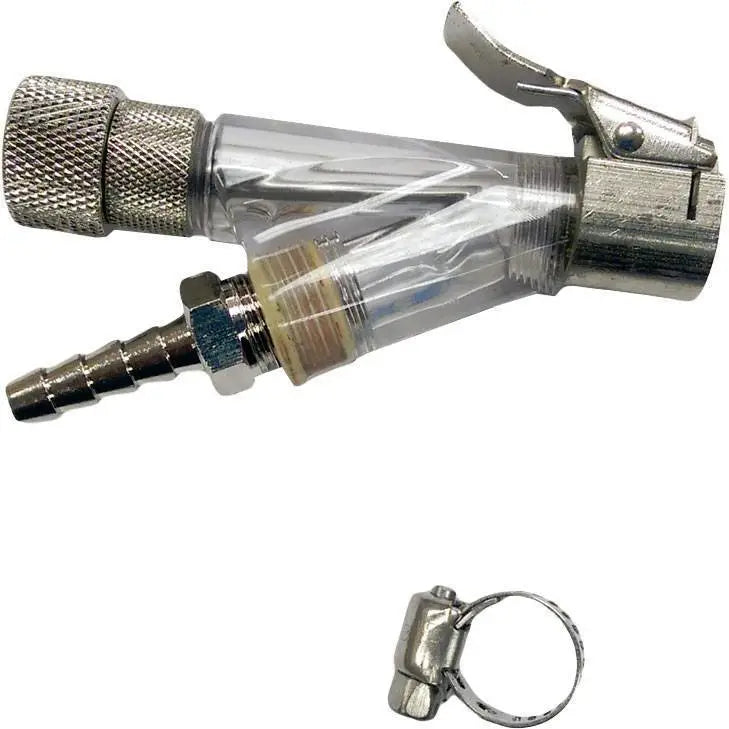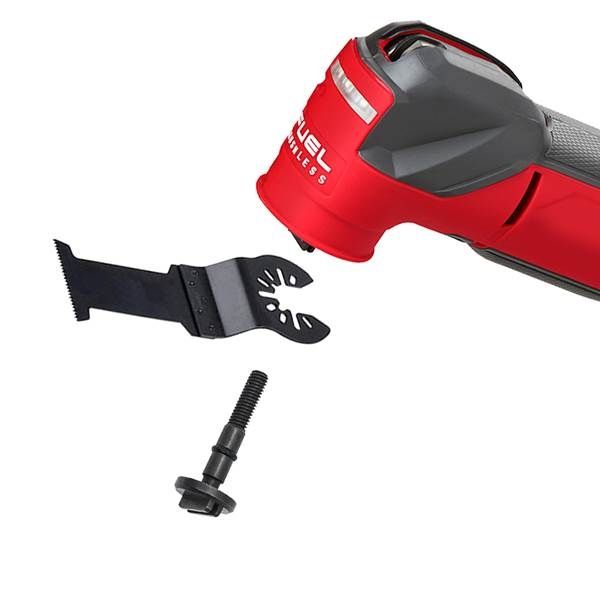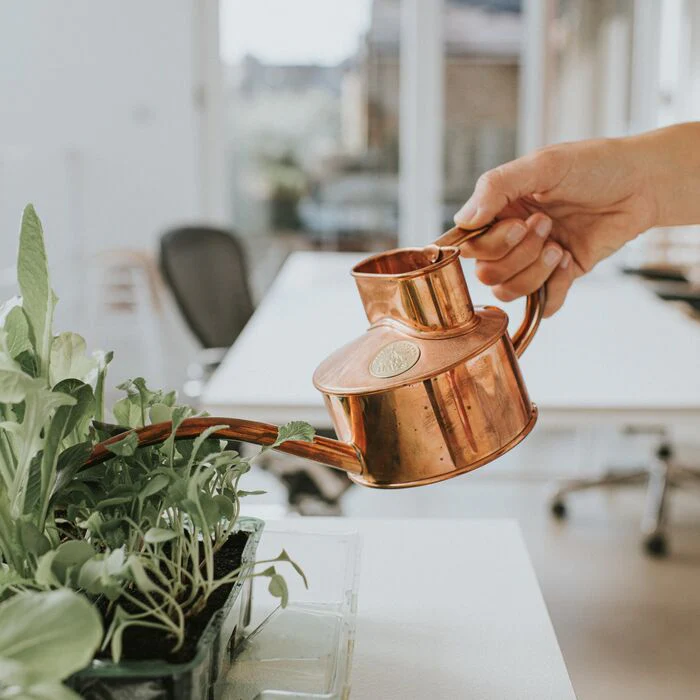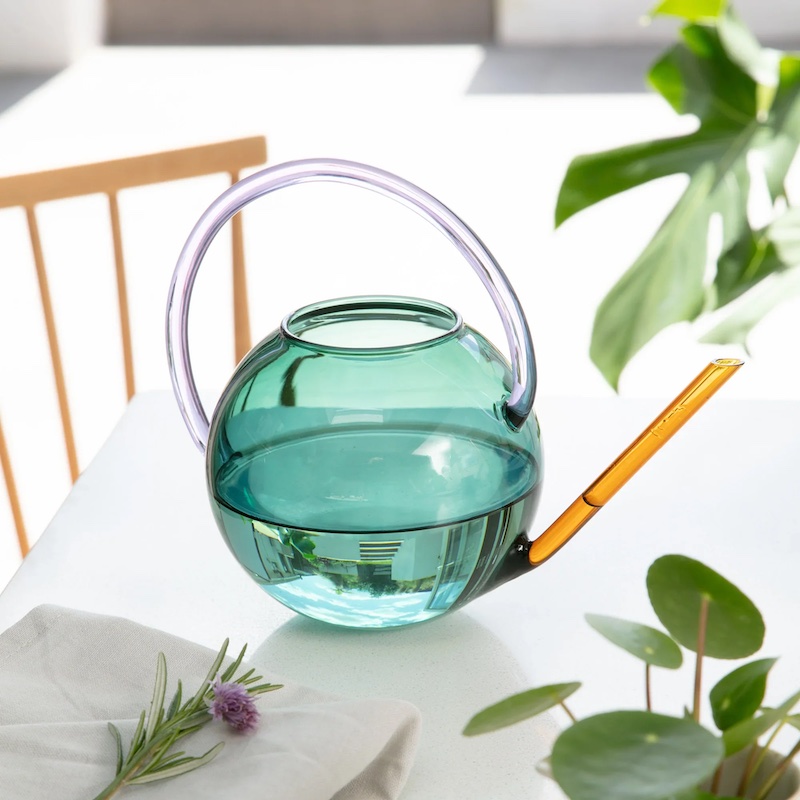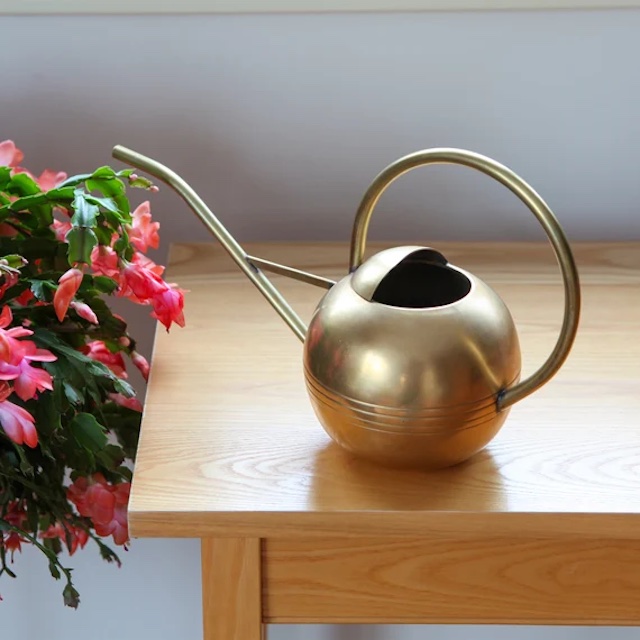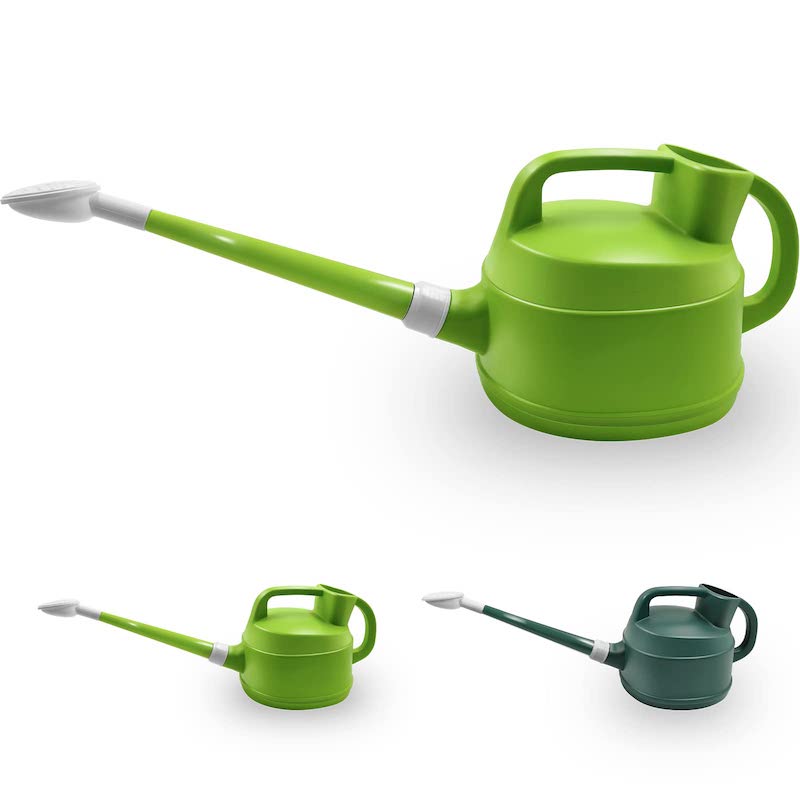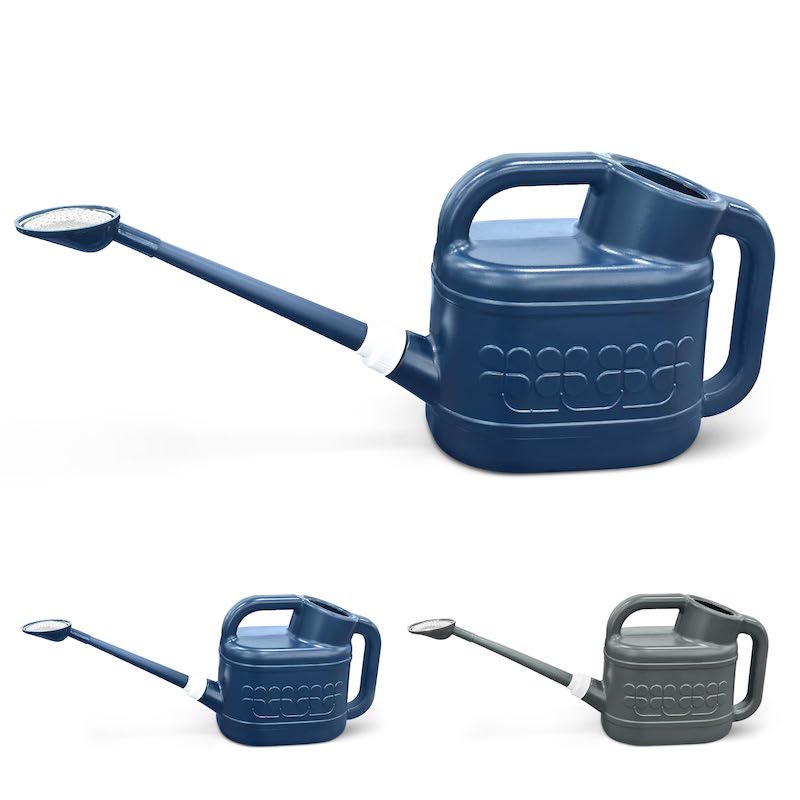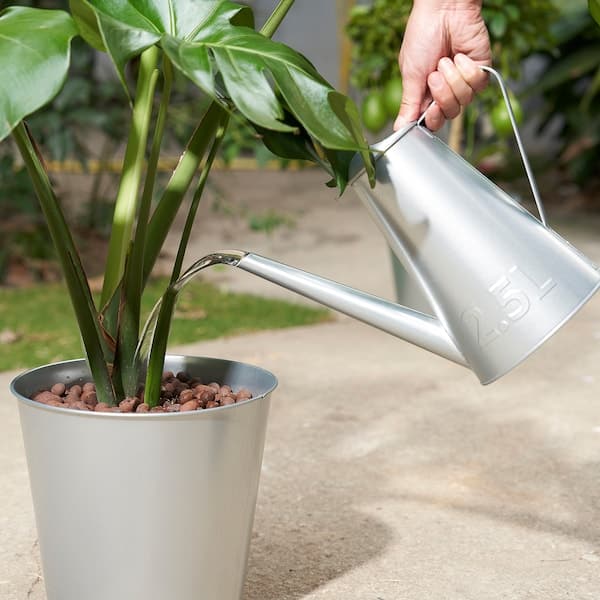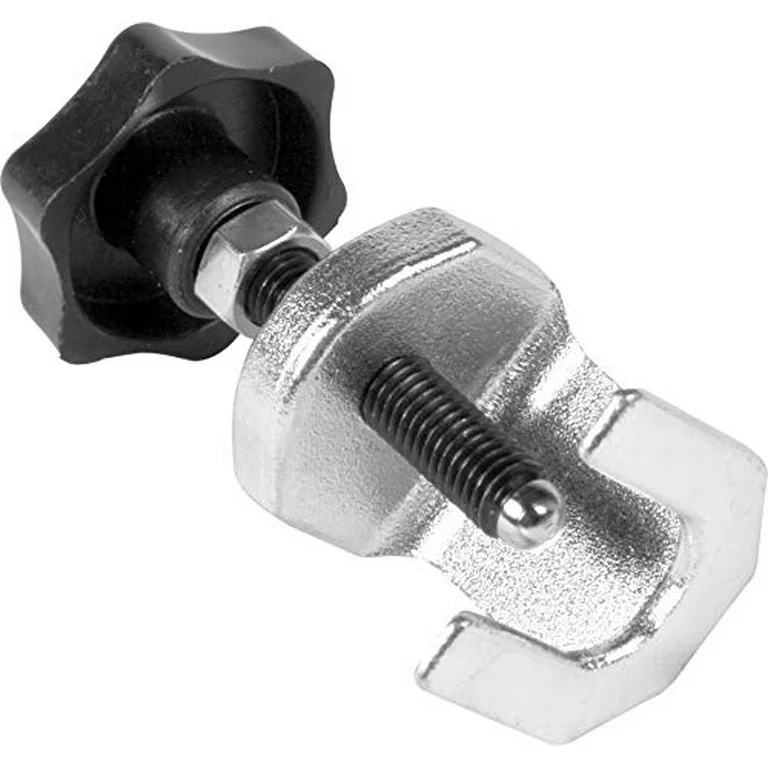
The Wiper Arm Removal Tool: Simplifying Maintenance Tasks
Part 1: Introduction to Wiper Arm Removal Tools – Why They Matter
Level 1: What Is a Wiper Arm Removal Tool?
A wiper arm removal tool is a specialized automotive device designed to safely and efficiently remove windshield wiper arms from their mounting points. These tools are essential for car owners, mechanics, and DIY enthusiasts who need to replace or repair wiper arms without causing damage to the vehicle’s windshield or wiper system. By providing leverage and precision, wiper arm removal tools ensure that the process is both quick and hassle-free.
- The Importance of Proper Wiper Arm Maintenance:
Windshield wipers play a critical role in ensuring visibility during inclement weather. Over time, however, wiper arms can become worn, misaligned, or damaged, compromising their effectiveness. Replacing these components requires careful handling to avoid scratching the windshield or damaging the wiper motor assembly. A wiper arm removal tool simplifies this task by offering a controlled method for detachment. - Why Use a Dedicated Tool?
Attempting to remove wiper arms with makeshift tools or brute force can lead to costly repairs. For instance, prying off an arm improperly might crack the windshield or strip the wiper arm threads. A dedicated removal tool minimizes these risks, making it an indispensable addition to any toolkit.
Level 2: Key Features of Wiper Arm Removal Tools
Understanding what sets wiper arm removal tools apart highlights their value in automotive maintenance.
- Design Variations and Compatibility:
Wiper arm removal tools come in various designs, including puller-style, fork-style, and universal adapters. Each type caters to specific vehicle models and wiper arm configurations. Some tools feature adjustable jaws or interchangeable heads to accommodate different sizes and shapes. - Durability and Ease of Use:
High-quality wiper arm removal tools are typically made from durable materials like hardened steel or reinforced plastic. Ergonomic handles and non-slip grips enhance user comfort, while corrosion-resistant coatings ensure longevity even under harsh conditions.
Part 2: Types of Wiper Arm Removal Tools – Exploring Options for Every Need
Level 1: Common Categories of Wiper Arm Removal Tools
There are several types of wiper arm removal tools available on the market, each tailored to specific applications and preferences. Below are some of the most popular categories:
- Puller-Style Tools:
Puller-style tools use a screw mechanism to apply even pressure and gently lift the wiper arm away from its mounting post. This design is particularly effective for vehicles with tight-fitting wiper arms, as it reduces the risk of slippage or damage. - Fork-Style Tools:
Fork-style tools consist of a U-shaped metal piece that slides under the base of the wiper arm. Once positioned, the tool acts as a lever to pry the arm loose. These tools are simple, affordable, and widely compatible with many vehicle makes and models.
Level 2: Specialty Tools for Unique Challenges
Beyond mainstream options, specialty wiper arm removal tools address niche requirements or complex scenarios.
- Universal Adapters:
Some tools include universal adapters or modular components that allow them to work across multiple vehicle brands and wiper arm designs. These versatile solutions are ideal for professional mechanics or individuals maintaining multiple vehicles. - Pneumatic-Assisted Tools:
For heavy-duty applications, pneumatic-assisted wiper arm removal tools provide additional power and precision. These tools are commonly used in commercial garages where efficiency and reliability are paramount.
Part 3: How Wiper Arm Removal Tools Enhance Your Maintenance Routine – Beyond Convenience
Level 1: Encouraging Safety and Efficiency
Wiper arm removal tools play a vital role in streamlining automotive maintenance tasks while prioritizing safety and accuracy.
- Preventing Damage During Removal:
Using a proper tool ensures that the delicate surfaces of your windshield and wiper system remain unharmed. This not only saves money on potential repairs but also extends the lifespan of your vehicle’s components. - Simplifying Complex Repairs:
Replacing wiper arms often involves navigating cramped spaces or dealing with rusted parts. A dedicated removal tool provides the leverage needed to overcome resistance without straining yourself or damaging surrounding areas.
Level 2: Supporting Professionalism and Confidence
Beyond practical benefits, wiper arm removal tools contribute to fostering confidence and professionalism among users.
- Empowering DIY Enthusiasts:
With the right tool, even novice car owners can tackle wiper arm replacements independently. This sense of accomplishment encourages further exploration into automotive maintenance and fosters self-reliance. - Enhancing Workshop Productivity:
For professional mechanics, having reliable wiper arm removal tools improves workflow efficiency. Tasks that once required significant effort and time can now be completed swiftly, allowing technicians to focus on more complex repairs.
Part 4: Practical Considerations – Choosing and Using Wiper Arm Removal Tools
Level 1: Tips for Selecting the Right Tool
With so many variations available, choosing the perfect wiper arm removal tool requires thoughtful consideration of several factors.
- Vehicle Compatibility:
Before purchasing a tool, verify its compatibility with your vehicle’s make and model. Consult your owner’s manual or online resources to determine the type of wiper arm attachment used in your car. - Material Quality and Build:
Opt for tools made from high-grade materials that resist wear and tear. Look for features like heat-treated steel, anti-corrosion coatings, and ergonomic designs that enhance usability and durability.
Level 2: Techniques for Safe and Effective Use
Mastering the correct usage of a wiper arm removal tool ensures optimal results and prevents accidents.
- Proper Positioning and Alignment:
Always position the tool securely before applying force. Misalignment can cause uneven pressure, leading to damage or incomplete removal. Double-check that all components are firmly seated before proceeding. - Avoiding Common Mistakes:
Over-tightening screws or applying excessive force can result in stripped threads or bent wiper arms. Work slowly and steadily, using only the amount of pressure necessary to disengage the part.
Part 5: Behind the Scenes – The Making of Wiper Arm Removal Tools
Level 1: The Development Process
Creating wiper arm removal tools involves meticulous planning and execution to ensure safety, performance, and aesthetic appeal.
- Concept Development:
Engineers collaborate with designers, mechanics, and end-users to develop concepts that balance visual design with functional performance. Inspiration comes from observing common challenges faced during wiper arm removal and identifying market gaps. - Testing and Refinement:
Once a prototype is developed, rigorous testing ensures consistency in strength, ergonomics, and ease of use. Feedback loops refine the product until it meets the brand’s exacting standards.
Level 2: Manufacturing Techniques
Advanced manufacturing techniques enable brands to produce high-quality wiper arm removal tools at scale while maintaining precision and consistency.
- Material Selection and Treatment:
Premium materials like stainless steel, aluminum alloys, and reinforced polymers undergo stringent quality checks. Special treatments protect against corrosion, fatigue, or breakage, ensuring longevity. - Quality Assurance:
Final inspections include stress tests, finish evaluations, and dimensional checks to guarantee compliance with industry standards. Only products that pass all quality checks are approved for distribution, ensuring customer satisfaction.
Accessories That Enhance Your Wiper Arm Removal Experience
Level 1: Essential Accessories for Everyday Use
Certain accessories can significantly improve the functionality and enjoyment of your wiper arm removal tool.
- Protective Covers and Guards:
Use protective covers or guards to shield your windshield and surrounding areas during removal. Always check compatibility before purchasing additional components. - Lubricants and Cleaning Solutions:
Rust inhibitors or penetrating oils help loosen stuck bolts or corroded parts. These solutions ensure smooth operation and prevent future sticking.
Level 2: Creative Enhancements
Take your wiper arm removal experience to the next level with these creative additions.
- Customizable Handles and Grips:
Add custom handles, grips, or tassels to personalize your tool further. This customization fosters ownership and pride among users. - Interactive Storytelling Tools:
Augmented reality apps or QR codes linked to multimedia content can enrich the tool’s narrative, providing insights into its creation, history, and cultural significance.
By understanding what makes wiper arm removal tools exceptional, exploring diverse designs, leveraging expert tips, and embracing future innovations, you can fully unlock their potential. Whether you’re seeking affordability, craftsmanship, or symbolism, these tools offer endless possibilities—one step closer to hassle-free maintenance!
Conclusion: Embracing the Versatility of Wiper Arm Removal Tools
Level 1: Celebrating Innovation and Reliability
Wiper arm removal tools embody the perfect blend of functionality and ingenuity, offering endless possibilities for efficient and safe automotive maintenance. Their ability to adapt to changing needs underscores their universal appeal.
- A Universal Solution:
Whether you’re a seasoned mechanic or a first-time car owner, wiper arm removal tools cater to diverse skill levels and requirements. Their versatility ensures they remain relevant across generations and industries. - Inspiring Future Innovations:
As technology advances and consumer demands evolve, wiper arm removal tools will continue to inspire creativity. Smart integrations, sustainable practices, and inclusive designs promise exciting developments in the years to come.
Level 2: Looking Ahead – Trends Shaping the Industry
With ongoing advancements in sustainability, inclusivity, and technology, the future of wiper arm removal tools holds immense potential for growth and reinvention.
- Eco-Friendly Initiatives:
Manufacturers are increasingly prioritizing eco-conscious practices, such as using recyclable materials, reducing packaging waste, and promoting longevity through durable designs. These efforts resonate with environmentally aware consumers seeking guilt-free purchases. - Tech-Enhanced Features:
Imagine smart wiper arm removal tools equipped with sensors that detect alignment issues or provide real-time feedback during operation. Such innovations would redefine how users interact with their tools, blending functionality with cutting-edge technology.
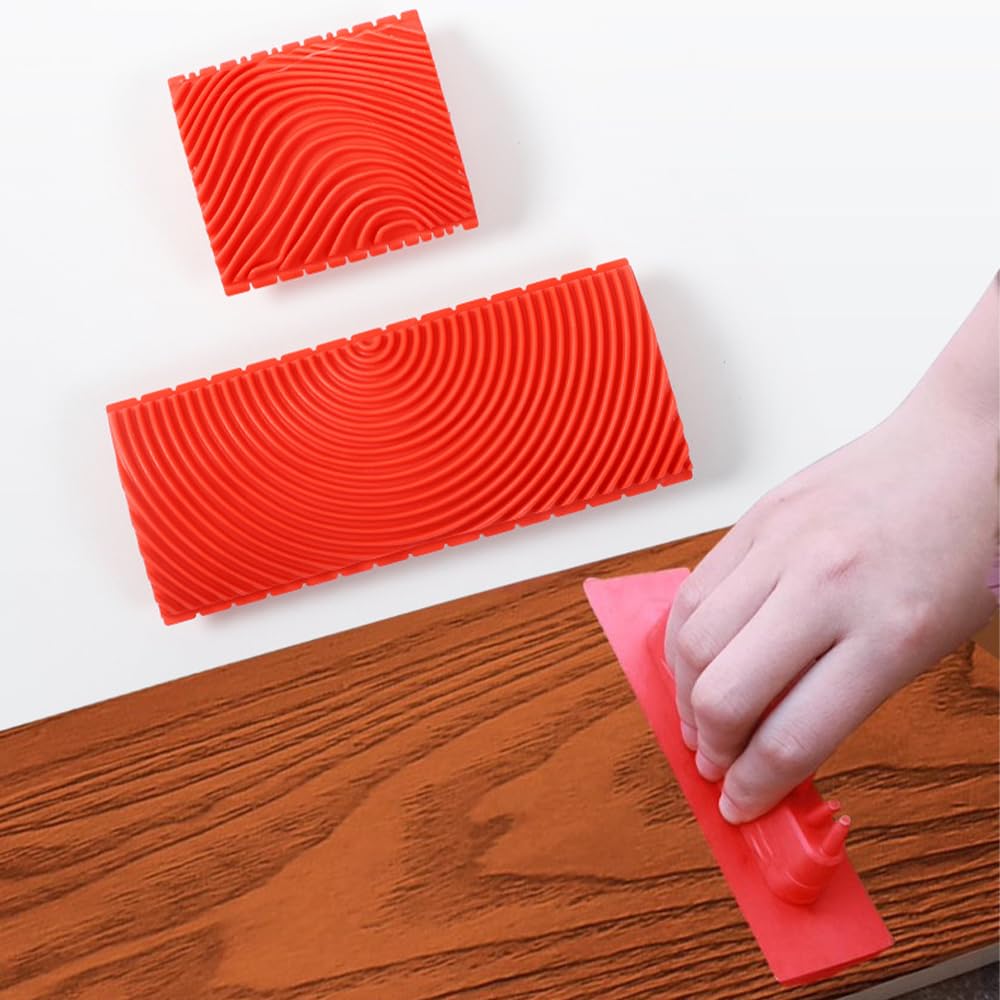
Mastering the Art of Wood Grain: The Guide to Wood Grain Tool
Part 1: Introduction to Wood Grain Tools – Unlocking the Beauty of Natural Wood
Level 1: What is a Wood Grain Tool?
A wood grain tool is any instrument or device designed to enhance, manipulate, or replicate the natural grain patterns found in wood. These tools are used by carpenters, furniture makers, and DIY enthusiasts to create stunning visual effects that highlight the inherent beauty of wood.
- The Allure of Wood Grain:
Wood grain refers to the unique patterns formed by the growth rings and fibers within a piece of wood. It is one of the most captivating features of timber, offering endless possibilities for creativity and customization. A wood grain tool allows artisans to emphasize these patterns or even simulate them on other materials. - Why Use a Wood Grain Tool?
Whether you’re restoring antique furniture, crafting custom pieces, or experimenting with artistic finishes, wood grain tools help bring out the best in your projects. They provide precision, control, and versatility, making them indispensable for anyone working with wood.
Level 2: Key Features and Benefits
Understanding the features and advantages of wood grain tools highlights their value in various applications.
- Enhancing Natural Patterns:
Tools like wire brushes, graining combs, and scrapers can accentuate the texture and depth of wood grain, giving it a more pronounced and tactile appearance. This technique is often used in rustic or vintage-inspired designs. - Versatility Across Projects:
From small decorative items to large-scale furniture, wood grain tools adapt seamlessly to different project sizes and styles. They can also be used to create faux wood effects on surfaces like metal, plastic, or drywall.
Part 2: Types of Wood Grain Tools – Exploring Options and Applications
Level 1: Categories of Wood Grain Tools
Wood grain tools come in various forms, each tailored to specific techniques and outcomes. Below are some of the most popular categories:
- Wire Brushes and Abrasive Tools:
These tools are ideal for distressing wood or bringing out its natural texture. Wire brushes remove softer parts of the wood while leaving harder grains intact, creating a rugged, weathered look. - Graining Combs and Rockers:
Graining combs and rockers are handheld tools used to mimic the appearance of real wood grain on painted or finished surfaces. By dragging these tools across wet paint or glaze, users can create intricate patterns reminiscent of oak, mahogany, or pine.
Level 2: Specialty and Advanced Options
For specialized tasks, there are advanced wood grain tools designed to meet unique requirements.
- Burnishing Tools:
Also known as wood-burning pens or pyrography tools, burnishing tools use heat to etch detailed designs directly onto wood. This method is perfect for adding personalized touches or intricate artwork to wooden surfaces. - Texturing Blades and Router Bits:
Power tools equipped with texturing blades or router bits allow users to carve deep grooves or raised patterns into wood. These tools are commonly used in cabinetry and flooring to add dimension and character.
Part 3: Why Wood Grain Tools Are Essential – Beyond Basic Crafting
Level 1: Practical Advantages
Wood grain tools deliver more than just aesthetic enhancements; they play a crucial role in achieving professional-quality results.
- Restoration and Refinishing:
When restoring old furniture or architectural elements, wood grain tools help revive worn-out surfaces without compromising their original charm. Techniques like wire brushing or sanding can restore faded grain patterns and prepare the surface for refinishing. - Customization and Personalization:
Artisans use wood grain tools to customize pieces according to client preferences. For example, a graining comb can transform plain plywood into a luxurious-looking panel that mimics expensive hardwoods.
Level 2: Emotional and Psychological Impact
Beyond practical benefits, wood grain tools contribute significantly to user satisfaction and creative fulfillment.
- Empowering Creativity:
For hobbyists and professionals alike, wood grain tools open up new avenues for self-expression. Whether you’re crafting heirloom-quality furniture or experimenting with abstract art, these tools inspire innovation and exploration. - Building Confidence in Craftsmanship:
Using wood grain tools effectively requires skill and practice, but mastering them builds confidence and pride in one’s abilities. The satisfaction of completing a beautifully finished piece reinforces the joy of craftsmanship.
Part 4: Tips for Using and Maintaining Your Wood Grain Tools
Level 1: Factors to Consider When Using the Tool
To ensure safe and effective operation, consider the following guidelines when using your wood grain tool:
- Choosing the Right Tool for the Task:
Different tools are suited to different materials and techniques. For instance, wire brushes work well on softwoods like pine, while graining combs are better for replicating fine details on painted surfaces. - Practicing Proper Technique:
Always test your technique on scrap material before applying it to your main project. This helps you gauge the pressure, angle, and motion needed to achieve the desired effect.
Level 2: Enhancing Longevity Through Proper Maintenance
A well-maintained wood grain tool will last longer and perform better over time.
- Cleaning After Use:
Regularly clean your tools after each use to remove sawdust, debris, or residue. For wire brushes, use a stiff brush or compressed air to clear trapped particles. Graining combs should be wiped down with a damp cloth to prevent paint buildup. - Storing Safely:
Store sharp-edged tools like graining combs or burnishing pens in protective cases or pouches to avoid damage or injury. Keep power tools in a dry, secure location to prevent rust or electrical issues.
Part 5: Behind the Scenes – How Wood Grain Tools Are Made
Level 1: The Design Process
Creating a wood grain tool involves meticulous planning and execution to ensure accuracy, functionality, and aesthetic appeal.
- Concept Development:
Designers begin by sketching ideas inspired by current trends, customer feedback, or technological advancements. Once finalized, prototypes are created using CAD software or handcrafted techniques to test proportions and movement. - Collaboration with Engineers:
For performance-driven models, designers collaborate closely with engineers to integrate advanced technologies like ergonomic grips, anti-slip coatings, or corrosion-resistant materials. This ensures the final product meets rigorous standards for comfort and durability.
Level 2: Manufacturing Techniques
Advanced manufacturing techniques enable manufacturers to produce high-quality wood grain tools at scale while maintaining consistency and precision.
- Material Selection and Treatment:
Processes like heat treatment, galvanization, or powder coating protect metals from rust and wear. Plastic components undergo treatments to resist cracking or fading due to UV exposure. - Quality Assurance:
Final inspections ensure that every wood grain tool meets stringent quality standards before reaching customers. This includes testing for durability, grip strength, and compatibility with various materials.
Accessories That Enhance Your Wood Grain Tool Experience
Level 1: Essential Accessories for Everyday Use
Certain accessories can significantly improve your experience with wood grain tools.
- Protective Gear:
Safety goggles, gloves, and dust masks are essential for protecting yourself from splinters, dust, and debris during woodworking projects. Always prioritize safety when operating sharp or powered tools. - Replacement Blades and Bits:
Keep spare blades or bits on hand to ensure uninterrupted workflow. High-quality carbide-tipped blades are recommended for extended durability and performance.
Level 2: Creative Enhancements
Take your wood grain tool game to the next level with these creative additions.
- Customizable Handles:
Invest in ergonomic handles or grips to reduce fatigue during prolonged use. Some models even offer adjustable angles for added comfort. - Dust Extraction Systems:
For environments prone to dust or debris, attach a vacuum hose adapter to minimize contamination during operations. This not only improves visibility but also creates a cleaner workspace.
By understanding what makes wood grain tools exceptional, exploring their diverse offerings, leveraging expert insights, and embracing future innovations, you can fully unlock their potential. Whether you’re seeking functionality, precision, or sustainability, these tools offer endless possibilities—one masterpiece at a time!
Conclusion: Celebrating the Legacy of Wood Grain Tools
Level 1: A Tribute to Tradition and Innovation
Wood grain tools embody the perfect blend of tradition, craftsmanship, and modern innovation. Whether used for restoring antiques, building custom furniture, or creating artistic masterpieces, these tools consistently deliver unmatched versatility and utility.
- A Universal Solution:
From seasoned woodworkers to novice DIYers, wood grain tools cater to diverse skill levels and project types. Their timeless appeal ensures they remain relevant across generations and industries. - Inspiring Future Innovations:
As technology advances and consumer preferences evolve, wood grain tools continue to innovate. Smart integration, ergonomic designs, and eco-friendly manufacturing processes promise exciting possibilities for the future.
Level 2: Looking Ahead – Trends in Wood Grain Tool Technology
With ongoing advancements in engineering and sustainability, the future of wood grain tools holds immense potential for growth and creativity.
- Smart Connectivity Features:
Imagine wood grain tools equipped with sensors that detect material density or recommend optimal settings for specific tasks. Such innovations would offer unparalleled convenience and precision. - Eco-Friendly Initiatives:
Brands are increasingly focusing on sustainable practices, such as using recycled materials, reducing packaging waste, and developing energy-efficient production methods. These efforts align with growing environmental awareness while maintaining excellence in performance.
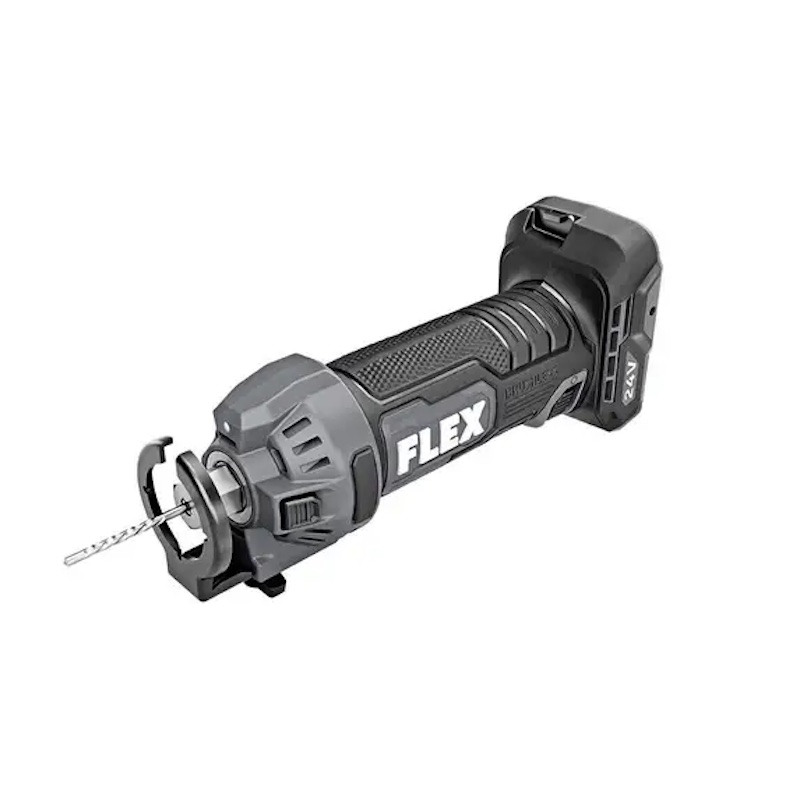
Mastering Precision – The Ultimate Guide to Drywall Cutout Tool
Part 1: Introduction to Drywall Cutout Tools – Revolutionizing Wall Modifications
Level 1: What is a Drywall Cutout Tool?
A drywall cutout tool, also known as a drywall router or rotary tool with cutting attachments, is a specialized device designed to create precise openings in drywall for outlets, switches, vents, and other fixtures. These tools are indispensable for contractors, electricians, and DIY enthusiasts working on home renovations or installations.
- The Evolution of Drywall Cutout Tools:
Before the advent of dedicated drywall cutout tools, professionals relied on manual methods like keyhole saws or utility knives, which were time-consuming and prone to errors. Modern drywall cutout tools have streamlined this process, offering speed, accuracy, and ease of use. - Why Choose a Drywall Cutout Tool?
Drywall cutout tools provide unmatched precision and efficiency when creating openings in walls. They reduce the risk of damaging surrounding areas, minimize dust, and save significant time compared to traditional methods.
Level 2: Key Features and Benefits
Understanding the features and advantages of drywall cutout tools highlights their value in various applications.
- Variable Speed Control:
Many drywall cutout tools come with adjustable speed settings, allowing users to match the tool’s performance to the task at hand. This ensures clean cuts without tearing or chipping the drywall. - Compact and Ergonomic Design:
These tools are lightweight and ergonomically designed, making them easy to handle even during extended use. Their compact size allows access to tight spaces, such as corners or ceilings.
Part 2: Types of Drywall Cutout Tools – Exploring Models and Variations
Level 1: Categories of Drywall Cutout Tools
Drywall cutout tools come in different designs and configurations, each suited to specific needs and preferences. Below are some of the most popular categories:
- Electric Rotary Cutters:
These are powered by electricity and feature a rotating bit that carves through drywall quickly and cleanly. Electric rotary cutters are ideal for larger projects where speed and precision are critical. - Cordless Drywall Routers:
Battery-operated models offer portability and flexibility, making them perfect for jobsites without easy access to power outlets. Cordless routers are particularly useful for remote locations or multi-story buildings.
Level 2: Specialty and Advanced Options
For specialized tasks, there are advanced drywall cutout tools designed to meet unique requirements.
- Oscillating Multi-Tools:
While not exclusively designed for drywall, oscillating multi-tools can be equipped with cutting blades specifically for drywall work. These versatile tools are excellent for detailed cuts and finishing touches. - Laser-Guided Cutout Tools:
Some high-end models include laser guides that project outlines onto the wall, ensuring perfectly aligned cuts. This feature is invaluable for installing electrical boxes or plumbing fixtures that require exact placement.
Part 3: Why Drywall Cutout Tools Stand Out – Beyond Basic Cutting
Level 1: Practical Advantages
Drywall cutout tools deliver more than just basic functionality; they enhance efficiency and precision across a wide array of applications.
- Precision Cuts for Professional Results:
Whether you’re installing an outlet box or cutting a vent hole, drywall cutout tools ensure clean, accurate edges. This level of precision minimizes the need for touch-ups and delivers professional-grade results. - Versatility Across Materials:
In addition to drywall, many cutout tools can handle materials like plywood, plastic, and thin metal sheets. This versatility makes them a valuable addition to any toolkit.
Level 2: Emotional and Psychological Impact
Beyond practical benefits, drywall cutout tools contribute significantly to user satisfaction and confidence.
- Empowering DIY Enthusiasts:
For homeowners tackling renovation projects, owning a drywall cutout tool provides a sense of accomplishment and self-reliance. It empowers individuals to take on complex tasks without relying on professional help. - Boosting Professional Efficiency:
Professionals benefit from the time-saving capabilities of drywall cutout tools, which enable them to complete jobs faster and with higher-quality results. This boosts client satisfaction and enhances their reputation in the industry.
Part 4: Tips for Using and Maintaining Your Drywall Cutout Tool
Level 1: Factors to Consider When Using the Tool
To ensure safe and effective operation, consider the following guidelines when using your drywall cutout tool:
- Selecting the Right Blade:
Different blades are designed for specific materials and tasks. For example, carbide-tipped blades are ideal for cutting through drywall, while bi-metal blades may be better suited for tougher materials like wood or metal. - Wearing Protective Gear:
Always wear safety goggles and a dust mask when operating a drywall cutout tool. Dust extraction systems or vacuum attachments can also help minimize airborne particles.
Level 2: Enhancing Longevity Through Proper Maintenance
A well-maintained drywall cutout tool will last longer and perform better over time.
- Cleaning After Use:
Regularly clean the tool after each use to remove dust, debris, and residue. Pay special attention to the motor housing and vents to prevent overheating. - Inspecting and Replacing Blades:
Check blades for signs of wear and tear. Replace them promptly to avoid accidents or subpar performance. Storing blades properly also extends their lifespan.
Part 5: Behind the Scenes – How Drywall Cutout Tools Are Made
Level 1: The Design Process
Creating a drywall cutout tool involves meticulous planning and execution to ensure accuracy, functionality, and aesthetic appeal.
- Concept Development:
Designers begin by sketching ideas inspired by current trends, customer feedback, or technological advancements. Once finalized, prototypes are created using CAD software or handcrafted techniques to test proportions and movement. - Collaboration with Engineers:
For performance-driven models, designers collaborate closely with engineers to integrate advanced technologies like brushless motors, ergonomic grips, or vibration reduction systems. This ensures the final product meets rigorous standards for comfort and durability.
Level 2: Manufacturing Techniques
Advanced manufacturing techniques enable manufacturers to produce high-quality drywall cutout tools at scale while maintaining consistency and precision.
- Material Selection and Treatment:
Processes like powder coating, galvanization, or heat treatment protect metals from rust and corrosion. Plastic components undergo treatments to resist cracking or fading due to UV exposure. - Quality Assurance:
Final inspections ensure that every drywall cutout tool meets stringent quality standards before reaching customers. This includes testing for motor performance, durability, and safety compliance.
Accessories That Enhance Your Drywall Cutout Tool Experience
Level 1: Essential Accessories for Everyday Use
Certain accessories can significantly improve your experience with drywall cutout tools.
- Carrying Cases:
Protect your tool and its accessories with a durable carrying case. These cases keep everything organized and portable, making them ideal for job sites or storage. - Extension Arms and Guides:
For precision work, extension arms and cutting guides help maintain straight lines and accurate measurements. These add-ons are particularly useful for larger projects like installing multiple outlets.
Level 2: Creative Enhancements
Take your drywall cutout tool game to the next level with these creative additions.
- Customizable Handles:
Invest in ergonomic handles or grips to reduce fatigue during prolonged use. Some models even offer adjustable angles for added comfort. - Dust Extraction Systems:
Attach a vacuum hose adapter to minimize dust and debris during operations like cutting drywall. This not only improves visibility but also creates a cleaner workspace.
By understanding what makes drywall cutout tools exceptional, exploring their diverse offerings, leveraging expert insights, and embracing future innovations, you can fully unlock their potential. Whether you’re seeking functionality, precision, or sustainability, these tools offer endless possibilities—one project at a time!
Conclusion: Celebrating the Legacy of Drywall Cutout Tools
Level 1: A Tribute to Innovation and Reliability
Drywall cutout tools embody the perfect fusion of innovation, durability, and user-friendly design. Whether used for home renovations, electrical installations, or creative projects, these tools consistently deliver unmatched versatility and utility.
- A Universal Solution:
From homeowners tackling weekend projects to contractors managing large-scale renovations, drywall cutout tools adapt effortlessly to diverse needs. Their timeless appeal ensures they remain relevant across generations and industries. - Inspiring Future Innovations:
As technology advances and consumer preferences evolve, drywall cutout tools continue to innovate. Smart integration, ergonomic designs, and eco-friendly manufacturing processes promise exciting possibilities for the future.
Level 2: Looking Ahead – Trends in Drywall Cutout Tool Technology
With ongoing advancements in engineering and sustainability, the future of drywall cutout tools holds immense potential for growth and creativity.
- Smart Connectivity Features:
Imagine drywall cutout tools equipped with Bluetooth connectivity, enabling users to monitor battery life, track usage, or receive maintenance alerts via smartphone apps. Such innovations would offer unparalleled convenience and control. - Eco-Friendly Initiatives:
Brands are increasingly focusing on sustainable practices, such as using recycled materials, reducing packaging waste, and developing energy-efficient charging systems. These efforts align with growing environmental awareness while maintaining excellence in performance.
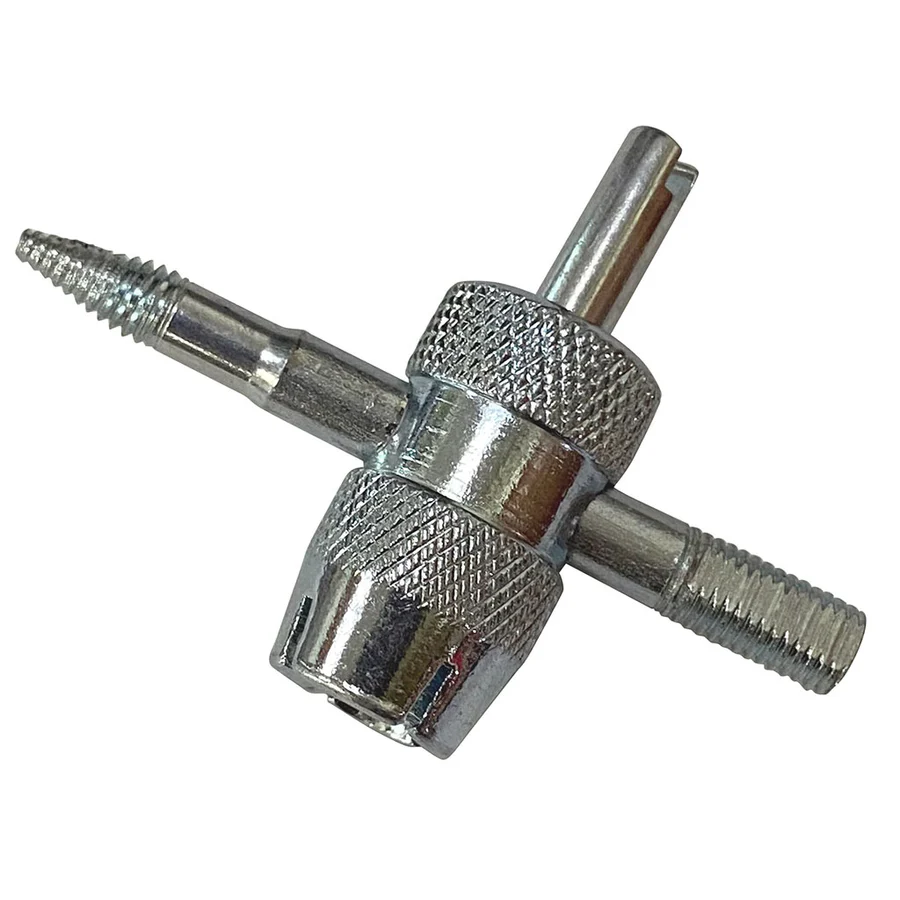
Mastering Precision – The Ultimate Guide to A Valve Core Tool
Part 1: Introduction to Valve Core Tools – A Small Tool with Big Impact
Level 1: What is a Valve Core Tool?
A valve core tool is a compact, handheld device designed to remove, install, or adjust the valve cores found in pneumatic systems, tires, and other pressurized applications. These tools are indispensable for mechanics, DIY enthusiasts, and professionals working with air compressors, HVAC systems, or automotive maintenance.
- The Importance of Valve Core Tools:
Valve cores are small but critical components that regulate airflow in pressurized systems. A malfunctioning or damaged valve core can lead to leaks, inefficiencies, or system failures. A valve core tool ensures these components can be serviced quickly and effectively. - Why Choose a Quality Valve Core Tool?
Investing in a reliable valve core tool ensures precision, durability, and ease of use. Whether you’re repairing a flat tire or maintaining an industrial air compressor, having the right tool makes all the difference.
Level 2: Key Features and Benefits
Understanding the features and advantages of valve core tools highlights their value in various applications.
- Compact and Portable Design:
Most valve core tools are small enough to fit in your pocket, making them convenient for on-the-go repairs. Their lightweight design doesn’t compromise strength or functionality. - Versatility Across Applications:
From automotive tires to refrigeration units, valve core tools are versatile enough to handle a wide range of tasks. They work seamlessly with Schrader valves, Presta valves, and other common valve types.
Part 2: Types of Valve Core Tools – Exploring Models and Variations
Level 1: Categories of Valve Core Tools
Valve core tools come in various designs, each tailored to specific needs and preferences. Below are some of the most popular categories:
- Standard Valve Core Tools:
These are the most common type, featuring a simple T-handle or L-shape design. They are affordable, easy to use, and perfect for basic valve core removal and installation tasks. - Multi-Function Valve Core Tools:
Some tools combine multiple functions, such as deflating tires, checking pressure, and removing/installing valve cores. These multi-purpose tools are ideal for those who want versatility in a single device.
Level 2: Specialty and Advanced Options
For specialized tasks, there are advanced valve core tools designed to meet unique requirements.
- Magnetic Valve Core Tools:
Equipped with a magnetic tip, these tools securely hold valve cores during removal or installation, reducing the risk of dropping or losing them. This feature is particularly useful in tight spaces or hard-to-reach areas. - Adjustable Torque Valve Core Tools:
These tools allow users to apply precise torque when tightening or loosening valve cores. This prevents over-tightening, which can damage the valve or cause leaks.
Part 3: Why Valve Core Tools Are Essential – Beyond Basic Repairs
Level 1: Practical Advantages
Valve core tools deliver more than just basic functionality; they enhance efficiency and reliability across a wide array of applications.
- Preventing Air Leaks:
A properly functioning valve core is crucial for maintaining consistent pressure in pneumatic systems. A valve core tool allows you to inspect, clean, or replace cores to prevent costly air leaks. - Saving Time and Effort:
Using a dedicated valve core tool simplifies what would otherwise be a tedious task. It eliminates the need for makeshift tools or guesswork, ensuring quick and accurate results.
Level 2: Emotional and Psychological Impact
Beyond practical benefits, valve core tools contribute significantly to user satisfaction and confidence.
- Empowering DIY Enthusiasts:
For hobbyists, owning a valve core tool provides a sense of self-sufficiency. It empowers individuals to tackle minor repairs without relying on professional help, saving both time and money. - Boosting Professional Efficiency:
Professionals benefit from the precision and speed offered by valve core tools. Whether servicing a fleet of vehicles or maintaining industrial equipment, these tools streamline workflows and improve overall productivity.
Part 4: Tips for Using and Maintaining Your Valve Core Tool
Level 1: Factors to Consider When Using the Tool
To ensure safe and effective operation, consider the following guidelines when using your valve core tool:
- Selecting the Right Tool for the Job:
Different valve types may require specific tools. For example, Presta valves often need a narrower tool compared to Schrader valves. Always match the tool to the valve type for optimal performance. - Inspecting Valves Before Use:
Before attempting to remove or install a valve core, inspect the valve for dirt, debris, or corrosion. Clean the area if necessary to avoid damaging the valve or tool.
Level 2: Enhancing Longevity Through Proper Maintenance
A well-maintained valve core tool will last longer and perform better over time.
- Cleaning After Use:
Regularly clean the tool after each use to remove grease, dirt, or metal shavings. Pay special attention to the gripping mechanism to ensure smooth operation. - Storing Safely:
Store your valve core tool in a dry, secure location to prevent rust or damage. A small toolbox or pouch is ideal for keeping it organized and accessible.
Part 5: Behind the Scenes – How Valve Core Tools Are Made
Level 1: The Design Process
Creating a valve core tool involves meticulous planning and execution to ensure accuracy, functionality, and aesthetic appeal.
- Concept Development:
Designers begin by sketching ideas inspired by current trends, customer feedback, or technological advancements. Once finalized, prototypes are created using CAD software or handcrafted techniques to test proportions and movement. - Collaboration with Engineers:
For performance-driven models, designers collaborate closely with engineers to integrate advanced technologies like ergonomic grips, anti-slip coatings, or corrosion-resistant materials. This ensures the final product meets rigorous standards for comfort and durability.
Level 2: Manufacturing Techniques
Advanced manufacturing techniques enable manufacturers to produce high-quality valve core tools at scale while maintaining consistency and precision.
- Material Selection and Treatment:
Processes like heat treatment, galvanization, or powder coating protect metals from rust and wear. Plastic components undergo treatments to resist cracking or fading due to UV exposure. - Quality Assurance:
Final inspections ensure that every valve core tool meets stringent quality standards before reaching customers. This includes testing for durability, grip strength, and compatibility with various valve types.
Accessories That Enhance Your Valve Core Tool Experience
Level 1: Essential Accessories for Everyday Use
Certain accessories can significantly improve your experience with valve core tools.
- Carrying Cases:
Protect your tool and its accessories with a durable carrying case. These cases keep everything organized and portable, making them ideal for job sites or storage. - Replacement Valve Cores:
Keep a stock of replacement valve cores on hand to ensure you’re prepared for any repair job. High-quality cores made from brass or stainless steel are recommended for longevity.
Level 2: Creative Enhancements
Take your valve core tool game to the next level with these creative additions.
- Customizable Handles:
Invest in ergonomic handles or grips to reduce fatigue during prolonged use. Some models even offer adjustable angles for added comfort. - Dust Extraction Systems:
For environments prone to dust or debris, attach a vacuum hose adapter to minimize contamination during operations. This not only improves visibility but also creates a cleaner workspace.
By understanding what makes valve core tools exceptional, exploring their diverse offerings, leveraging expert insights, and embracing future innovations, you can fully unlock their potential. Whether you’re seeking functionality, precision, or sustainability, these tools offer endless possibilities—one project at a time!
Conclusion: Celebrating the Legacy of Valve Core Tools
Level 1: A Tribute to Simplicity and Reliability
Valve core tools embody the perfect blend of simplicity, reliability, and functionality. Whether used for automotive repairs, HVAC maintenance, or industrial applications, these tools consistently deliver unmatched performance and utility.
- A Universal Solution:
From homeowners performing routine tire checks to technicians managing complex pneumatic systems, valve core tools adapt effortlessly to diverse needs. Their timeless appeal ensures they remain relevant across industries and generations. - Inspiring Future Innovations:
As technology advances and consumer preferences evolve, valve core tools continue to innovate. Smart integration, ergonomic designs, and eco-friendly manufacturing processes promise exciting possibilities for the future.
Level 2: Looking Ahead – Trends in Valve Core Tool Technology
With ongoing advancements in engineering and sustainability, the future of valve core tools holds immense potential for growth and creativity.
- Smart Connectivity Features:
Imagine valve core tools equipped with sensors that detect pressure levels or identify faulty cores. Such innovations would offer unparalleled convenience and precision. - Eco-Friendly Initiatives:
Brands are increasingly focusing on sustainable practices, such as using recycled materials, reducing packaging waste, and developing energy-efficient production methods. These efforts align with growing environmental awareness while maintaining excellence in performance.
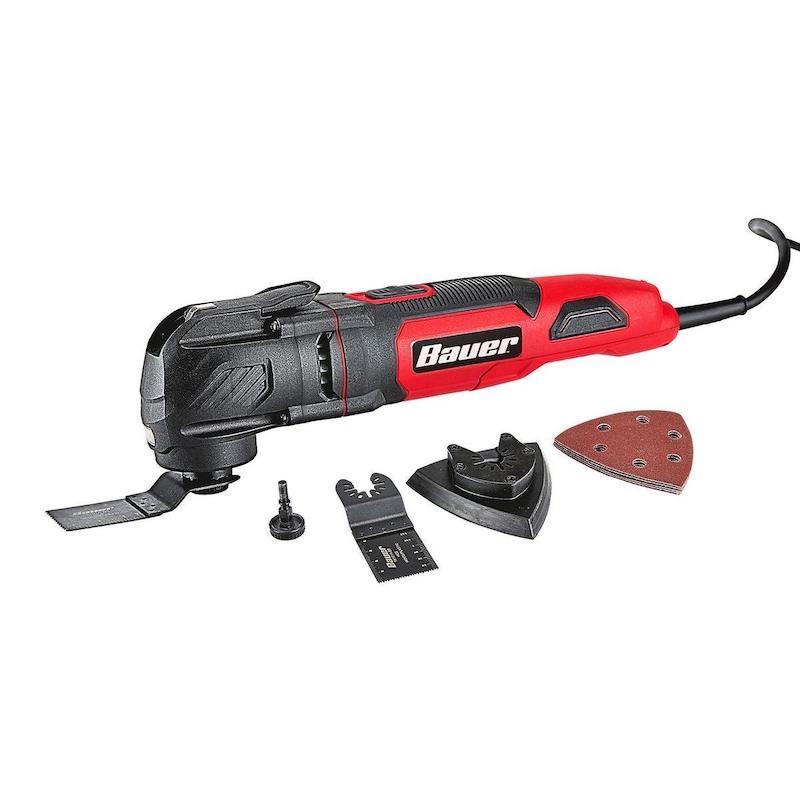
Precision and Versatility: A Guide to Craftsman Oscillating Tool
Part 1: Introduction to Craftsman Oscillating Tools – A Game-Changer in DIY and Professional Projects
Level 1: What is a Craftsman Oscillating Tool?
Craftsman oscillating tools are versatile, handheld power tools designed to perform a wide range of tasks with precision and efficiency. These tools feature an oscillating head that moves back and forth at high speeds, enabling users to cut, sand, grind, scrape, and polish various materials.
- The Evolution of Oscillating Tools:
Oscillating tools have revolutionized the way people approach home improvement and professional projects. Originally developed for industrial use, these tools have become increasingly popular among DIY enthusiasts and professionals alike due to their adaptability and ease of use. - Why Choose a Craftsman Oscillating Tool?
Craftsman, a trusted name in the tool industry, offers oscillating tools that combine durability, performance, and affordability. Their tools are engineered to meet the demands of both casual users and seasoned craftsmen, making them a reliable choice for any project.
Level 2: Key Features and Benefits
Understanding the features and advantages of Craftsman oscillating tools helps users appreciate their value and versatility.
- Variable Speed Control:
One standout feature of Craftsman oscillating tools is their variable speed settings, allowing users to adjust the tool’s speed to match the task at hand. This ensures optimal performance whether you’re cutting through wood or sanding delicate surfaces. - Quick-Change Accessory System:
Craftsman tools often come with a quick-change mechanism, enabling users to swap out attachments effortlessly. This feature saves time and enhances productivity, especially when working on multi-step projects.
Part 2: Types of Craftsman Oscillating Tools – Exploring Models and Accessories
Level 1: Categories of Craftsman Oscillating Tools
Craftsman offers a variety of oscillating tools tailored to different needs and budgets. Below are some of the most popular categories:
- Corded Oscillating Tools:
Corded models provide consistent power and are ideal for heavy-duty tasks that require extended use. They are perfect for professionals who need reliability and uninterrupted performance. - Cordless Oscillating Tools:
For those who prioritize portability and convenience, cordless oscillating tools powered by lithium-ion batteries are an excellent choice. These tools allow users to work in areas without access to electrical outlets, making them perfect for outdoor projects.
Level 2: Specialty Attachments and Accessories
The true versatility of Craftsman oscillating tools lies in their wide range of compatible accessories.
- Cutting Blades:
From wood-cutting blades to metal-cutting options, Craftsman offers a variety of blades designed to handle specific materials. Bi-metal blades, for example, are durable enough to tackle both wood and nails, making them indispensable for demolition work. - Sanding Pads and Scrapers:
Sanding pads come in different grits to suit various surfaces, while scraper attachments are perfect for removing old paint, caulk, or adhesives. These accessories transform the oscillating tool into a multipurpose powerhouse.
Part 3: Why Craftsman Oscillating Tools Stand Out – Beyond Just Functionality
Level 1: Practical Advantages
Craftsman oscillating tools deliver more than just basic functionality; they enhance efficiency and precision across a wide array of applications.
- Precision Cutting and Detail Work:
The oscillating motion allows for incredibly precise cuts, even in tight spaces. This makes Craftsman tools ideal for intricate tasks like trimming doorjambs or cutting notches for electrical boxes. - Versatility Across Materials:
Whether you’re working with wood, metal, plastic, or drywall, Craftsman oscillating tools can handle it all. Their ability to switch between tasks seamlessly reduces the need for multiple specialized tools.
Level 2: Emotional and Psychological Impact
Beyond practical benefits, Craftsman oscillating tools contribute significantly to user satisfaction and confidence.
- Empowering DIY Enthusiasts:
For hobbyists, owning a Craftsman oscillating tool provides a sense of accomplishment and self-reliance. It empowers individuals to take on complex projects without relying on professional help. - Boosting Professional Efficiency:
Professionals benefit from the time-saving capabilities of Craftsman tools, which enable them to complete jobs faster and with higher quality results. This boosts client satisfaction and enhances their reputation in the industry.
Part 4: Tips for Using and Maintaining Your Craftsman Oscillating Tool
Level 1: Factors to Consider When Using the Tool
To ensure safe and effective operation, consider the following guidelines when using your Craftsman oscillating tool:
- Selecting the Right Attachment:
Choose the appropriate blade or accessory based on the material and task. Using the wrong attachment can lead to poor performance or damage to the tool. - Wearing Protective Gear:
Always wear safety goggles and gloves when operating an oscillating tool. Dust masks are also recommended for tasks that generate fine particles, such as sanding or cutting drywall.
Level 2: Enhancing Longevity Through Proper Maintenance
A well-maintained Craftsman oscillating tool will last longer and perform better over time.
- Cleaning After Use:
Regularly clean the tool after each use to remove dust, debris, and residue. Pay special attention to the motor housing and vents to prevent overheating. - Inspecting and Replacing Accessories:
Check blades and attachments for signs of wear and tear. Replace them promptly to avoid accidents or subpar performance. Storing accessories properly also extends their lifespan.
Part 5: Behind the Scenes – How Craftsman Oscillating Tools Are Made
Level 1: The Design Process
Creating a Craftsman oscillating tool involves meticulous planning and execution to ensure accuracy, functionality, and aesthetic appeal.
- Concept Development:
Designers begin by sketching ideas inspired by current trends, customer feedback, or technological advancements. Once finalized, prototypes are created using CAD software or handcrafted techniques to test proportions and movement. - Collaboration with Engineers:
For performance-driven models, designers collaborate closely with engineers to integrate advanced technologies like brushless motors, ergonomic grips, or vibration reduction systems. This ensures the final product meets rigorous standards for comfort and durability.
Level 2: Manufacturing Techniques
Advanced manufacturing techniques enable Craftsman to produce high-quality oscillating tools at scale while maintaining consistency and precision.
- Material Selection and Treatment:
Processes like powder coating, galvanization, or heat treatment protect metals from rust and corrosion. Plastic components undergo treatments to resist cracking or fading due to UV exposure. - Quality Assurance:
Final inspections ensure that every oscillating tool meets stringent quality standards before reaching customers. This includes testing for motor performance, durability, and safety compliance.
Accessories That Enhance Your Craftsman Oscillating Tool Experience
Level 1: Essential Accessories for Everyday Use
Certain accessories can significantly improve your experience with Craftsman oscillating tools.
- Carrying Cases:
Protect your tool and its accessories with a durable carrying case. These cases keep everything organized and portable, making them ideal for job sites or storage. - Extension Arms and Guides:
For precision work, extension arms and cutting guides help maintain straight lines and accurate measurements. These add-ons are particularly useful for larger projects like flooring installations.
Level 2: Creative Enhancements
Take your Craftsman oscillating tool game to the next level with these creative additions.
- Customizable Handles:
Invest in ergonomic handles or grips to reduce fatigue during prolonged use. Some models even offer adjustable angles for added comfort. - Dust Extraction Systems:
Attach a vacuum hose adapter to minimize dust and debris during operations like sanding or cutting drywall. This not only improves visibility but also creates a cleaner workspace.
By understanding what makes Craftsman oscillating tools exceptional, exploring their diverse offerings, leveraging expert insights, and embracing future innovations, you can fully unlock their potential. Whether you’re seeking functionality, precision, or sustainability, these tools offer endless possibilities—one project at a time!
Conclusion: Celebrating the Legacy of Craftsman Oscillating Tools
Level 1: A Tribute to Innovation and Reliability
Craftsman oscillating tools embody the perfect fusion of innovation, durability, and user-friendly design. Whether used for home repairs, renovations, or creative projects, these tools consistently deliver unmatched versatility and utility.
- A Universal Solution:
From homeowners tackling weekend projects to contractors managing large-scale renovations, Craftsman oscillating tools adapt effortlessly to diverse needs. Their timeless appeal ensures they remain relevant across generations and industries. - Inspiring Future Innovations:
As technology advances and consumer preferences evolve, Craftsman continues to innovate. Smart integration, ergonomic designs, and eco-friendly manufacturing processes promise exciting possibilities for the future.
Level 2: Looking Ahead – Trends in Oscillating Tool Technology
With ongoing advancements in engineering and sustainability, the future of oscillating tools holds immense potential for growth and creativity.
- Smart Connectivity Features:
Imagine Craftsman oscillating tools equipped with Bluetooth connectivity, enabling users to monitor battery life, track usage, or receive maintenance alerts via smartphone apps. Such innovations would offer unparalleled convenience and control. - Eco-Friendly Initiatives:
Brands are increasingly focusing on sustainable practices, such as using recycled materials, reducing packaging waste, and developing energy-efficient charging systems. These efforts align with growing environmental awareness while maintaining excellence in performance.
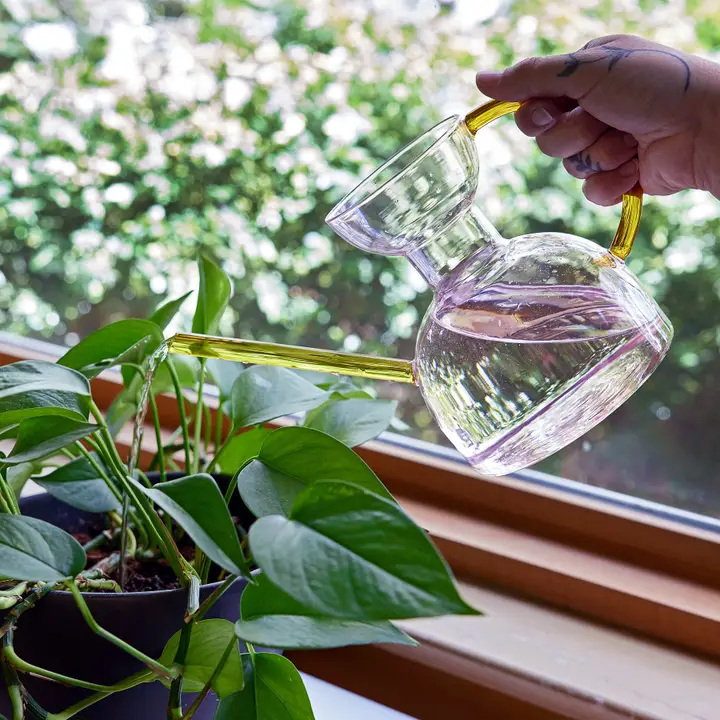
Fun to Gardening: The Watering Can Designs for Modern Gardens
The Evolution of Watering Cans: From Traditional to Modern
The watering can has come a long way from its origins. In the early days, gardeners used simple vessels to carry and pour water. These were often bulky and inefficient. Over time, design has evolved to meet the gardener’s needs. Let’s explore how the watering can has transformed.
The traditional metal watering can had a charm of its own. It was durable and built to last. But it was also heavy and prone to rust. Later, plastic models appeared. They offered a lightweight choice but sometimes lacked durability.
Now, modern watering cans mix form with function. They are often sleek and made with high-tech materials. Their shapes have also changed. They are easier to carry and pour, even for longer periods. Designers consider balance, grip, and the flow of water. This means less strain on the gardener’s body.
Some modern cans also feature longer spouts. These allow for precise watering, reaching even the most delicate plants. Others are collapsible for easy storage. A variety of sizes and styles cater to every type of garden and gardener.
From rustic to refined, the watering can has grown with the gardener. It is a staple that has adapted with time. Today’s cans are a fusion of tradition and innovation. They serve as an example of how gardening tools evolve. They meet modern demands while preserving their core purpose.
In our next sections, we’ll delve deeper into the specifics. We’ll look at ergonomic features, innovative materials, and smart designs. All these aspects contribute to the evolution of the watering can. Stay tuned to learn how to make your gardening more efficient and enjoyable.
Ergonomic Watering Can Features for Comfort and Efficiency
Modern gardeners look for tools that make the job easier and more comfortable. Ergonomic design is key when choosing a watering can. When we say ‘ergonomic’, we refer to a design aimed at minimizing discomfort and fatigue. Here are some features that define ergonomic watering cans.
- Comfortable Handles: A good handle matters. It should fit well in your hand. Whether you prefer a single handle on top or a side grip, it needs to provide stability and comfort during use.
- Lightweight Construction: A heavy can adds unnecessary strain. Ergonomic watering cans use materials that keep the weight low. This allows for longer watering sessions without the extra burden.
- Balanced Design: When filled with water, the watering can should not tip over or become hard to manage. A balanced design distributes the weight evenly, making it easier to carry and pour.
- Long Spouts: As mentioned, longer spouts offer precision. They let you water the roots of plants without splashing the leaves. This spout design also helps in reaching plants that are far away or in tight corners.
- Easy to Fill: You should be able to fill the can without struggling. A wide opening can help avoid spills and waste.
By focusing on ergonomic features, the watering can becomes more than just a container for water. It’s a tool designed with the gardener’s well-being in mind. With these features, you can water your garden efficiently and with greater comfort.
Innovative Materials in Watering Can Construction
The modern watering can has evolved, embracing new materials for better performance and durability. Manufacturers now use various innovative materials that offer many benefits.
- Lightweight Plastics: High-quality plastics are common in modern designs. They make watering cans light and easy to handle. Gone are the days of lugging around heavy, metal cans.
- Stainless Steel: For those seeking durability, stainless steel is an excellent choice. It resists rust and can last for years. Plus, it adds a sleek look to garden tools.
- Rubber Composites: Some watering cans feature rubber elements. They provide a comfortable grip and can reduce slippage, even when your hands are wet.
- Recycled Materials: Environment-conscious brands use recycled plastics and metals. These reduce waste and support sustainability without compromising quality.
- Silicone: The rise of collapsible silicone watering cans is notable. They are space-savers, perfect for gardeners with limited storage.
- Ceramic and Terracotta: These materials are not just for pots. Some watering cans made from ceramic or terracotta offer a traditional look with a modern twist.
Each material brings its own set of advantages. The choice depends on the gardener’s preferences and needs. From classic durability to innovative collapsibility, there’s a material to suit every gardener’s style.
In summary, the watering can has crossed into a new era of construction. Innovative materials support longevity, ergonomics, and even environmental sustainability. When selecting your next watering can, consider these innovative materials to enhance your gardening routine.
Smart Watering: Can Designs with Built-in Measuring Tools
Modern watering cans are now smarter. They come with built-in measuring tools. These features are perfect for gardeners who track water usage. They ensure that each plant gets just the right amount of water. No more guesswork or overwatering.
- Measuring Markings: Some cans have clear markings on the side. You can see exactly how much water you are using.
- Adjustable Flow: Dial systems let you control how much water flows out. This helps in applying the precise amount needed for different plants.
- Detachable Spray Heads: These heads adjust the water output. You can switch between a gentle shower or a strong stream.
- Water Level Indicators: Clear windows or indicators show the water level at a glance. You can refill exactly when needed.
Built-in measuring tools in the watering can add accuracy to your gardening. They save water and protect plants. These features fit well with the modern approach to gardening. Careful water management is crucial for both plant health and environmental conservation. So, choose a can that makes smart watering simple and effective.
The Impact of Aesthetics: Stylish Can Designs for the Modern Gardener
Today’s gardeners not only seek function but style as well. The watering can is no exception. Here’s how aesthetics play a role in modern watering can designs:
- Sleek Shapes: Modern cans feature smooth lines and curves. This sleek design fits well with contemporary garden decor.
- Bold Colors: Black, white, or vibrant hues make watering cans stand out. They can complement flowers and greenery or add a pop of color.
- Patterned Surfaces: Some cans boast patterns or artistic images. These designs make the cans both tools and decorative pieces.
- Mixed Materials: Combining wood, metal, or glass adds a touch of elegance. It also shows the gardener’s personal taste.
- Minimalist Style: For lovers of simplicity, there are cans with a minimalist look. They prove that less can be more even in garden tools.
The right watering can not only serves its purpose but also reflects the gardener’s style. It can be a statement piece in the garden. A stylish can turns the routine task of watering into a more enjoyable experience.
When choosing a watering can, consider its visual appeal along with its features. A can that looks good and feels right in hand makes gardening a delight. Remember, the key is to find balance between beauty and functionality.
Environmentally Friendly Watering Cans: Sustainable Options
The push for sustainability has reached garden tools, with the watering can leading the charge. More gardeners seek eco-friendly options. These cans are made with care for the earth in mind.
- Biodegradable Materials: Some cans are crafted from materials that break down naturally. This reduces waste in landfills.
- Solar-Powered Features: Innovations include solar-powered watering cans. These use renewable energy to sprinkle plants.
- Recycled Plastics: Many brands now use recycled plastics. This choice cuts down on new plastic production and its environmental impact.
- Water Conservation Design: Cans with special designs save water. They prevent over-watering and support smart water use in gardens.
- Local Sourcing: Choosing cans made from locally-sourced materials can lower carbon footprints. This also supports local economies.
Environmentally friendly watering cans not only benefit the planet. They also show that gardeners can make a difference in their daily choices. By picking sustainable options, you help preserve the earth for future generations.
Novelty Watering Cans: Combining Function with Fun
Gardening can be both a task and a delight. Novelty watering cans bring fun into the mix. They come in unique shapes and vibrant colors. These cans often spark joy and inspire gardeners of all ages. Children especially love using fun-shaped cans like animals or cartoon characters. They encourage little ones to help in the garden. Adults too, appreciate the whimsy that novelty cans bring.
Here are features that make novelty watering cans both fun and functional:
- Unique Shapes: From flamingos to elephants, novelty cans turn heads. They can match your garden’s theme or express your personality.
- Vibrant Colors: Bright colors catch the eye. They make the watering can easy to find among the greenery.
- Compact Sizes: Novelty cans often have smaller sizes. This makes them perfect for indoor plants or small outdoor spaces.
- Lightweight: Despite their fun designs, they are easy to carry. This cuts down on fatigue while watering.
- Durable Materials: Looks can be deceiving. Many novelty cans are as tough as traditional ones.
Novelty watering cans blend the practical with the playful. They serve the watering can’s purpose while adding a splash of fun to gardening. Next up, we’ll discuss how to select the right watering can for your gardening needs.
Selecting the Right Watering Can for Your Gardening Needs
Selecting the perfect watering can is crucial for your gardening success. Here are some tips to guide you:
- Consider Capacity: Think about the size of your garden. A larger garden may need a can that holds more water, while a small one or indoor plants will require a smaller can.
- Assess the Weight: Remember, water adds weight. Try a can when it’s full to ensure you can manage it comfortably. This is where lightweight materials are beneficial.
- Balance Ergonomics with Material: Lightweight plastics are easier on the wrists. But, if durability is a priority, choose stainless steel or rubber composites.
- Mind the Spout Length and Design: A spout that’s too short or too long could make watering difficult. Find a can with a spout suitable for your plants’ locations.
- Look for Comfortable Handling: A can with an ergonomic handle will reduce hand fatigue. It should feel secure and comfortable when lifting and pouring.
- Prioritize the Design: If style matters to you, select a can that appeals to your aesthetic. Sleek cans or vibrant colors might appeal to your sense of design.
- Consider Environmental Impact: Opt for cans made of recycled materials or with water-saving features if sustainability is important to you.
- Function vs. Fun: If you want to inspire kids to garden or simply enjoy whimsical tools, look for novelty designs that also function well.
Choosing the right watering can involves balancing practical features with personal preferences. The key is to find one that is comfortable, practical for your garden’s needs, and suits your style. With the right can, watering becomes an enjoyable part of gardening, rather than a chore.

Choosing the Perfect House Plant Watering Can of Indoor Garden
Top Features to Look for in Watering Cans
Choosing the right house plant watering can is crucial for the health of your indoor garden. When shopping for a watering can, consider these top features:
- Long Spout: Look for a watering can with a long spout. It helps to deliver water directly to the soil, avoiding spills and splashes on the leaves.
- Comfortable Handle: A good grip is important. Whether you prefer a single handle on top or one that loops over the side, make sure it’s comfortable to hold.
- Material Quality: Durable materials like galvanized steel or high-grade plastic ensure your watering can lasts longer.
- Capacity: Choose a size that suits your house plant collection. If you have many plants, a larger capacity means fewer trips to the tap.
- Detachable Rose: Some watering cans come with a detachable rose (the nozzle) which provides a gentle shower ideal for delicate plants.
- Measurement Marks: This feature is useful for adding the right amount of water or mixing in nutrients.
- Design: Aesthetic design might be important if your watering can is going to be on display.
These features combine function with convenience, and incorporating them into your selection process will make the task of watering less of a chore and more of a pleasure. Remember to match the house plant watering can’s features with your specific indoor plant needs.
Most Stylish Watering Cans for Indoor Use
When it comes to indoor gardening, style matters as much as function. A chic house plant watering can serves as both a tool and a decorative piece. As we look ahead to 2025, the trend is towards watering cans that not only perform well but also enhance home decor. Here are the most stylish watering cans to consider for your indoor plants.
- Sleek Minimalist Designs: Clean lines and simple forms are in. Look for watering cans with a modern, minimalist aesthetic that can blend seamlessly with any interior design.
- Bold Colors: Bright colors can add a pop of energy to your space. A watering can in a vibrant color can become a focal point in a room.
- Metallic Finishes: Metallics like copper, brass, and stainless steel bring a touch of elegance. They catch the light and add a warm glow to your indoor garden area.
- Transparent Plastic: See-through plastic watering cans are trending. They allow you to view the water level easily and add a contemporary flair.
- Quirky Shapes: For those who love a bit of quirkiness, watering cans come in a variety of fun and unusual shapes. These can express your personality while serving their purpose.
- Hand-Painted Details: Artisanal cans with hand-painted designs can add a unique, personal touch. They often reflect craftsmanship and attention to detail.
Incorporating style into your choice of a house plant watering can encourages a harmonious blend of practicality and aesthetics. With these stylish options, watering your plants becomes a delightful experience that adds to the beauty of your living space.
Essential Watering Can Accessories for House Plants
Enhancing your indoor gardening with the right accessories can make house plant care easier and more effective. Here are must-have additions for your house plant watering can:
- Watering Stakes: Perfect for deep watering. These stakes slowly release water into the soil, ideal for when you’re not home.
- Spout Attachments: Different spouts offer varied water flow. Choose a fine mist for delicate plants or a steady stream for larger pots.
- Water Level Indicator: Some accessories help you see how much water is left. This is handy for maintaining proper watering schedules.
- Plant Food Dispenser: Mix and dispense plant food right from your can. Look for dispensers that attach easily and distribute evenly.
- Funnel: A simple funnel prevents spills when filling your watering can. It keeps water and nutrients right where they need to go.
- Storage Caddy: Keep all your watering accessories organized. A caddy that attaches to your can is both practical and convenient.
- Replacement Roses: Having extra roses can be a lifesaver. Switch them out as needed to keep your watering can in top condition.
By investing in these accessories, you ensure a well-equipped watering can that caters to every need of your house plants. Each tool helps to provide your plants with the precise care they require, making your gardening easier and more enjoyable.
The Best Materials for Long-Lasting Watering Cans
When hunting for a house plant watering can, material is key. The right choice ensures durability and long life. Here’s what to look for:
- Stainless Steel: Tough and rust-resistant, stainless steel watering cans endure. They resist dents and keep their shine for years.
- Galvanized Steel: This material stands up to corrosion and lasts long. It also lends a classic look to your watering can.
- High-Grade Plastic: Lightweight and affordable, quality plastics can be just as durable. Ensure it’s UV-resistant to prevent sun damage.
- Ceramic: Though heavier, ceramic provides a timeless elegance. It’s sturdy if handled with care and won’t corrode.
- Copper: Copper cans are strong and have antimicrobial properties. They develop a unique patina over time, adding character.
- Rubber: Mixes of rubber and plastic offer flexibility. These materials can withstand drops and rough handling.
Choosing the best material for your house plant watering can isn’t just about looks. It’s a balance of durability, handling, and the care your plants need. Each material brings its benefits to the table, setting the stage for years of reliable use. Opt for the one that matches your gardening style and the needs of your indoor oasis.
Comparing Prices: Affordable vs Premium Watering Cans
When shopping for a house plant watering can, price is a major factor. Affordable and premium options differ in many ways, and understanding these can help you make the best choice for your needs.
Affordable Watering Cans
These cans might lack some advanced features but still serve well for basic watering needs. They’re ideal if you’re starting out or have a small number of plants.
Look for affordable options with essential features like a long spout and comfortable handle. Keep an eye on material quality to ensure they last. Some may have simple measurement marks or detachable roses. They do the job without extra flair or added cost.
Premium Watering Cans
Premium watering cans boast high-end materials like stainless steel, galvanized steel, or copper. They often feature elegant designs and additional accessories like water level indicators or plant food dispensers. These materials ensure durability and longevity, making them a worthy investment.
With premium cans, you pay more for the craftsmanship, design, and often ergonomic features that enhance comfort during use. These options cater to enthusiasts who want both functionality and a stylish look to complement their home decor.
In conclusion, your choice between affordable or premium watering cans should hinge on your personal needs, the number of house plants you have, and how much you value aesthetics. Whatever you choose, make sure it ticks off the essential features that cater to the care of your indoor plants.
Advancements in Watering Can Design in Recent Years
The design of house plant watering cans has seen significant innovation in recent years. These advancements have blended functionality with user comfort and sustainability. Let’s explore some of these cutting-edge changes.
- Self-Watering Technology: Some modern cans have self-watering systems. They use sensors to detect soil moisture and release water as needed. This tech helps prevent both under and over-watering.
- Collapsible Bodies: Space-saving designs are now available. Collapsible watering cans fold down for easy storage when not in use.
- Integrated Water Filters: Newer models come with built-in water filters. These ensure plants receive clean water free from impurities.
- Smart Watering Cans: We’ve seen the rise of smart cans that connect to mobile apps. They provide watering reminders and track water usage for optimal plant health.
- Multipurpose Features: Recent designs often include multitasking capabilities. Some cans double as misters or come with interchangeable heads for various watering needs.
- Aesthetic Integration: Beyond utility, the latest cans have embraced design as a key element. They enhance home decor while efficiently caring for plants.
These advancements show the evolution of the house plant watering can into a more sophisticated, efficient, and appealing tool for indoor gardeners. As we continue to look for ways to simplify plant care, it’s clear that watering can design will keep progressing, marrying innovation with the timeless joy of gardening.
User-Friendly Watering Cans: Ergonomics and Ease of Use
When selecting a house plant watering can, user comfort is paramount. A can should feel good in your hand and not cause strain over time. Here’s what makes a watering can user-friendly:
- Lightweight Design: A can that’s easy to lift makes watering less tiring. Opt for a design that’s efficient without the extra weight.
- Balanced Weight Distribution: A well-designed watering can should balance well, whether full or empty. This helps in controlling the pour and reduces the risk of spilling.
- Ergonomic Handles: Handles should be shaped to fit your grip comfortably. Ergonomic handles reduce hand fatigue, making it easier to water multiple plants.
- Easy-to-Use Controls: A user-friendly can might come with a push-button control for water flow. This simplifies the task and is a considerable benefit for those with limited hand strength.
- Non-slip Surfaces: Ensuring a secure grip, even when wet, is crucial. Non-slip materials on handles and bodies prevent accidental drops.
By focusing on these ergonomic features, you’ll find a house plant watering can that makes indoor gardening a more enjoyable and pain-free process. A can that’s easy to use encourages regular plant care, leading to a thriving indoor garden.
Eco-Friendly Options: Sustainable Watering Can Choices
The trend towards sustainability has not left the realm of house plant watering cans untouched. Eco-friendly options are on the rise, attracting gardeners who want to minimize their environmental impact. Here are some choices that blend sustainability with efficiency:
- Recycled Materials: Look for cans made from recycled plastics or metals. These reduce waste and support a circular economy.
- Biodegradable Plastics: Some watering cans are now made from biodegradable materials which decompose naturally over time.
- Solar-Powered Features: Innovative designs include solar-powered watering cans. They use renewable energy to power self-watering features.
- Water Conservation: Cans designed to minimize water use help prevent wastage. Features like precise spouts and measurement marks support this.
- Durability: An eco-friendly watering can should last for years. Durable materials mean you won’t have to replace the can often, reducing waste.
- Repairability: Easy-to-repair designs ensure you can fix a watering can instead of throwing it away. Look for modularity in design where parts can be replaced individually.
Choosing sustainable house plant watering cans is a step towards responsible gardening. They allow you to care for your plants while caring for the planet too. Armed with one of these, every pour is a pour towards a greener future.
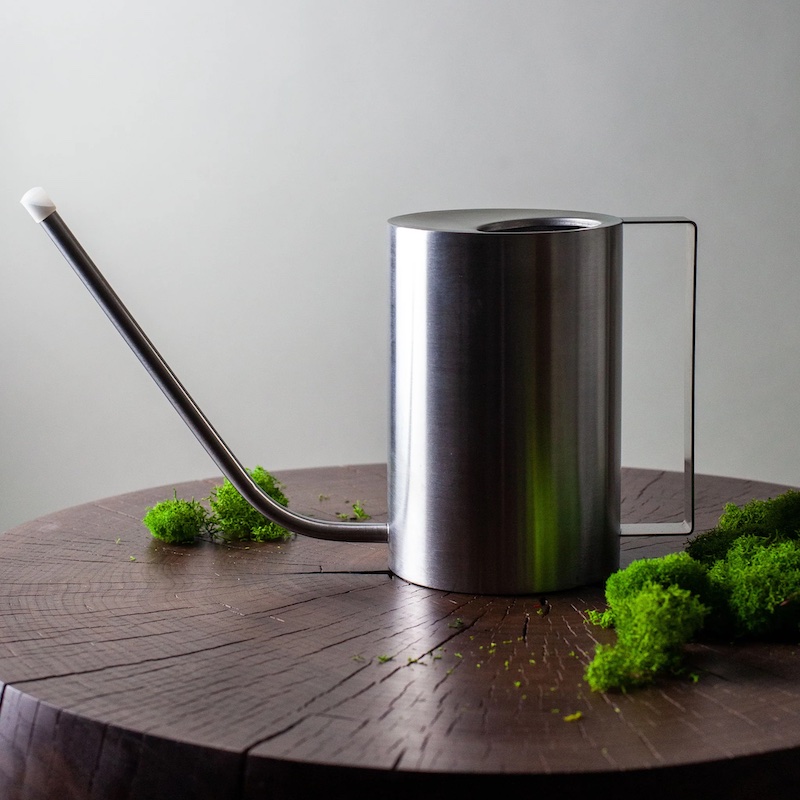
Choosing the Best Indoor Watering Can for Plant’s Health 2025
The Importance of Proper Indoor Plant Watering
Proper indoor plant watering sustains plant health. It promotes growth and prevents disease. Many indoor plants come from humid climates. They need regular, consistent moisture levels. Overwatering and underwatering can both cause harm. Roots can rot or dry out. Leaves may yellow, wilt, or drop off. Choosing the best indoor watering can helps avoid these issues. It allows for gentle, precise water delivery. This mimics natural rainfall, which plants have adapted to. A suitable can offers control over water flow and volume. This ensures that every plant gets just what it needs. Remember, the right can makes all the difference in plant care. Now, let’s explore the key features to look for in your next best indoor watering can.
Key Features to Look for in an Indoor Watering Can
When searching for the best indoor watering can, certain features make some standout. Consider these essentials:
- Capacity: Size matters. You’ll want a can that holds enough water for your indoor garden but isn’t too heavy when full.
- Material: Good cans come in different materials. Plastic is lightweight and affordable. Metal options lend durability and style. Go for one that fits your routine and decor.
- Spout Design: A spout with a gentle flow is key for precise watering. Look for a can with a narrow spout to reach between leaves without splashing.
- Balance and Handle Design: A comfortable grip and a well-balanced can ease your watering chores. It should feel good in your hand even after filling it up.
- Ease of Filling: Your watering can should fit under the sink tap easily. A wide opening helps avoid spills.
- Detachable Spout Heads: Some cans offer detachable heads. These can provide a soft shower or a steady stream, depending on your plant’s needs.
- Water Level Indicator: For those who prefer precision, some cans have level indicators. This helps you monitor how much water you’re giving to each plant.
Choosing the best indoor watering can with these features will streamline your plant care routine. It also ensures your plants thrive with just the right amount of water.
Types of Indoor Watering Cans
When hunting for the best indoor watering can, you’ll come across diverse types. Each serves different needs and preferences. Dive into these common types:
Long Spout Watering Cans
Long spout watering cans are optimal for reaching into thick foliage without disturbing plants. Their extended spouts ensure water reaches the soil, not the leaves, preventing fungal diseases. These cans are great for deep pots and hanging baskets. With a narrow and lengthy spout, you get precise control, minimizing spills.
Mini Watering Cans for Small Plants
Have a collection of succulents or small potted herbs? Mini watering cans deliver a fine amount of water for these delicate plants. They’re lightweight and easy to handle. Plus, their compact size fits snugly on a windowsill or shelf, always ready for quick touch-ups.
Decorative Watering Cans for Interior Aesthetics
Who says utility can’t be stylish? Decorative watering cans add a splash of charm to any room while fulfilling their purpose. They come in vibrant colors, elegant styles, and various materials. Some even serve as planters or vases when not in use, blending seamlessly with your decor.
Material Considerations for Durability and Style
Choosing the best indoor watering can isn’t just about function. It’s also about finding a piece that stands up to frequent use and complements your home’s interior. Here’s what to consider when it comes to materials:
Plastic Watering Cans
Plastic is a common choice for indoor watering cans. It’s lightweight, making it easier to carry around. Plastic cans resist rust and are often more affordable. However, they can vary in quality. Look for high-grade, BPA-free plastics for safety and longevity.
Metal Watering Cans
Metal cans offer durability and a classic look. They can withstand drops and rough handling. Metals like stainless steel or galvanized iron prevent rusting. Choose these if you desire a timeless style that lasts years.
Ceramic Watering Cans
Ceramic watering cans are pieces of art in themselves. They add a touch of elegance to your indoor garden. They’re heavier and more delicate than other materials but offer unique charm and sophistication.
Silicone and Other Modern Materials
Some modern watering cans incorporate silicone or rubber elements for flexibility and grip. These innovative materials may offer features like collapsibility for easy storage.
When picking the best indoor watering can for your needs, consider how often you’ll use it, the size of your indoor garden, and your personal aesthetics. Go with a material that meets your practical needs and suits your style preferences. Whether you favor practicality, durability, or design, there’s a material perfect for your watering tasks.
Top Indoor Watering Can Picks for 2025
Selecting the best indoor watering can is crucial for gardening enthusiasts. For 2025, we’ve curated a list of top picks to ensure optimal plant care. These watering cans combine functionality with style and durability, ensuring a pleasurable gardening experience.
Long Spout Watering Cans
Our 2025 selection includes long spout cans, ideal for reaching into dense plants. These cans distribute water evenly, right to the base of your plants. Their design minimizes risk of leaf fungus and spills. Their spouts provide precision, essential for plants in deep pots or hanging baskets.
Mini Watering Cans for Small Plants
For those who love smaller plants, our mini watering cans are perfect. They are light and simple to handle. Small in size, they fit easily in tight spaces, like shelves or windowsills. We’ve tested each one to ensure it offers the right amount of water for delicate plants.
Decorative Watering Cans for Interior Aesthetics
We also showcase decorative cans that double as home decor. These stylish options come in bold colors and elegant designs. They not only water plants efficiently but also enhance your room’s look. Some even act as vases, merging utility with aesthetics.
Our top picks for the best indoor watering can in 2025 cater to diverse needs and tastes. They make plant care easy and integrate well with your lifestyle. Choose one that fits your indoor gardening routine and personal style.
Ergonomic Design: Ensuring Comfort in Use
Ergonomic design is key for selecting the best indoor watering can. Comfort in use is just as important as the watering can’s functional features. When you water plants regularly, a can that’s awkward or heavy can strain your hands and wrists. An ergonomic watering can fits comfortably in your grip and maintains balance, even when full.
Here are some ergonomic features to look for:
- Lightweight Build: A can that’s easy to lift and move reduces fatigue. Lightweight materials help make this possible.
- Curved Handles: A handle with a natural curve can make holding and pouring more comfortable. This shape supports your hand’s natural position.
- Balanced Design: The best indoor watering cans should feel stable and easy to tilt. This balance helps prevent spills and reduces strain on your body.
- Non-Slip Grip: Look for a can with a handle that doesn’t slip in wet conditions. A secure grip ensures safe and precise pouring.
An ergonomic watering can improves your watering experience. It helps prevent discomfort during lengthy plant-care sessions. Remember to test the feel of a can before you purchase. Lift it, hold it, pretend to water – find one that feels like an extension of your hand.
Innovative Watering Cans: Exploring New Features and Technologies
With 2025’s gardening scene evolving, the best indoor watering can is also advancing. Manufacturers are bringing out cans with new features and technologies. These innovations aim to enhance plant care and user experience.
Here are the latest trends to look for:
- Self-Watering Cans: These cans do some of the work for you. They release water slowly over time, perfect for when you’re away.
- Digital Watering Reminders: Some watering cans now come with built-in timers or apps. They remind you when it’s time to water, ensuring your plants stay hydrated.
- Adjustable Flow Rates: Advanced cans offer settings for varied water flow. You can switch from a gentle mist to a steady stream with ease.
- Eco-Friendly Materials: Today’s best indoor watering cans are not just about style. They also respect the environment with recycled or biodegradable materials.
- Integrated Measuring Tools: Precision is key in watering. Select cans have built-in rulers or measuring reservoirs to help you give the exact amount of water.
These innovative watering cans are transforming the way gardeners care for their indoor plants. They add convenience and precision, setting the standard for the future. When choosing your next watering can, consider these modern options to make indoor gardening more efficient and enjoyable.
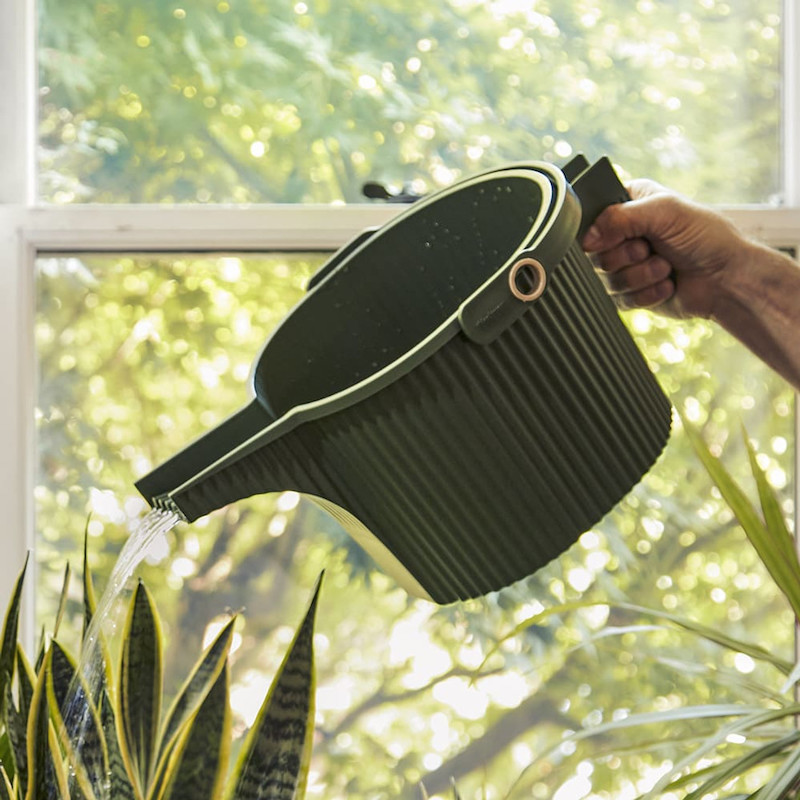
Japanese Watering Can: Mastering the Art with Japanese Cans
The History and Design Evolution of Japanese Watering Cans
Japanese watering cans have a rich history. Crafted in Japan, their designs reflect centuries of gardening tradition. Initially, these cans were simple, functional tools. Over time, they evolved into artistic symbols among garden tools. Early Japanese cans were often made from bamboo. This material was readily available and easy to work with. As metalworking techniques improved, artisans began crafting cans from metals like copper and brass. These metals increased durability and longevity.
Today’s Japanese watering cans may include modern materials like plastic. However, they still honor the traditional aesthetic. Designers focus on balance, precision, and beauty. Key features like long spouts and ergonomic handles are common. These features improve the watering experience. The evolution of design also reflects the importance of minimalistic beauty in Japanese culture. Even now, each can’s design serves both function and form.
These watering cans are not just tools but cultural artifacts. They tell the story of Japanese gardens and their keepers. With the right care, they last for many years, becoming heirlooms. Gardeners worldwide treasure them for their history and unique design elements.
Key Features of Japanese Watering Cans
When exploring Japanese watering cans, note their defining traits. These key features set them apart, adding value for gardeners. First, the long spouts stand out. They are slender and often curve elegantly. This design helps control water flow. It makes sure plants receive gentle watering without displacement of soil.
Durability is another feature. Many cans use metals like copper or brass. These materials resist rust and wear. They sustain frequent use while maintaining appearance. Some modern cans use high-quality plastics. These too can last and work well.
Ergonomic handling is crucial. The handles on Japanese watering cans balance weight. This makes them comfortable to carry. Even when full, the cans are easy to tilt and maneuver.
Aesthetic plays a huge role too. These watering cans showcase minimalistic beauty. They often have a simple, yet sophisticated look. Gardeners admire them for their functional elegance.
Lastly, they typically come in various sizes. This caters to different garden needs. Whether for indoor plants or larger outdoor settings, there’s a size that fits.
To sum up, Japanese watering cans feature long spouts, durability, ergonomic design, visual appeal, and versatile sizing. These attributes make them a top choice. Gardeners appreciate their practicality and the touch of tradition they add to gardening routines.
How to Choose the Right Japanese Watering Can for Your Garden
Choosing the right Japanese watering can is critical for any gardener. Consider several factors to find the perfect fit. First, think about size. A larger garden may need a can with a bigger capacity. Indoor plants usually require a smaller, more delicate can. Check the size to match your garden’s needs.
Next, evaluate the spout length and shape. Longer spouts reach plants in the back of beds with ease. They also water with precision to avoid water waste. For tight spaces or bonsai, a can with a shorter, more controlled spout helps.
Material is also key. Metal cans, like brass or copper, offer durability and charm. They often last longer and age gracefully. If you prefer lightweight options, high-quality plastic is an alternative. It can withstand the elements too.
Handle design matters for comfort. Look for a handle that feels good in your hand. It should allow easy tipping even when the can is full. A handle that balances the weight avoids stress on your arm.
Style might influence your choice. Many enjoy the traditional look of a Japanese can. It adds an aesthetic touch to the gardening experience. But, make sure style doesn’t sacrifice functionality.
Keep in mind the price range. Japanese cans can be pricier due to their quality and design. Decide on a budget that reflects the value you place on durability and beauty.
Finally, consider the can’s brand reputation. Seek out ones with positive reviews. Well-known craftsmen guarantee a can’s authenticity and quality craftsmanship.
To choose the right Japanese watering can, consider size, spout, material, handle, style, price, and brand reputation. Match the watering can to your garden’s specific needs for the best results.
The Role of Japanese Watering Cans in Precision Watering Practices
Japanese watering cans shine in the precision watering arena. Their meticulous design focuses on precise control and minimal waste of water. By using a Japanese watering can, gardeners can direct water right to the plant’s base. This targeted approach encourages root growth and reduces the splatter that can compact soil or spread diseases.
Targeted Watering
The long, slender spouts of Japanese watering cans make them ideal for targeted watering. They allow for reaching under leaves to deliver water directly to the roots. This precision prevents overwatering which is crucial for sensitive plants.
Control Over Water Flow
With narrow spouts, the water flow from these cans is fine and steady. Gardeners find it easier to manage water usage, which is important during droughts or water restrictions. The consistent flow also protects young or fragile plants from heavy water pressure.
Soil Preservation
Good watering practices maintain soil structure. The gentle water stream from Japanese cans prevents disrupting the soil. This is vital in protecting plants from root disturbances and maintaining healthy soil ecology.
Ideal for Indoor and Bonsai Gardening
Japanese watering cans are perfect for indoor gardens and bonsai trees. Their precise water delivery nurtures delicate plants and small root systems. It also allows for watering in tight spaces without making a mess.
These aspects reveal how Japanese watering cans contribute to careful and sustainable gardening practices. With their assistance, gardeners can ensure their plants thrive.
Tips for Maintenance and Care of Your Japanese Watering Can
To keep your Japanese watering can in top condition, follow these maintenance tips. Regular care ensures longevity and preserves the can’s beauty. Here are some simple, yet effective steps to take:
Cleaning After Use
Always clean your can after use. Empty any remaining water to prevent mold growth. Rinse the inside with clear water to remove any debris or buildup.
Proper Drying
Store the can upside down or hang it. This allows all the water to drain. Air-drying prevents rust and water spots, especially on metal cans.
Avoiding Dents and Scratches
Handle with care to prevent dents and scratches. These blemishes can harm the can’s aesthetic and integrity over time.
Polishing Metal Cans
If you own a metal Japanese watering can, like brass or copper, polish it occasionally. Use a soft cloth and a suitable metal cleaner to maintain its shine.
Checking for Leaks
Inspect your can regularly for leaks. Minor issues can often be fixed at home. For major leaks, seek professional repair to maintain the can’s functionality.
Proper Storage
Protect your can from harsh weather by storing it indoors. A dry place shields it from the elements. This is important for preventing damage from extreme temperatures.
Replacing Worn Parts
Maintenance may include replacing worn parts like washers. Keep your can’s spout and handle in good working order. This ensures precise watering and comfortable use.
Every Japanese watering can, with its history and design, deserves careful maintenance. With these tips, you can enjoy your can for years to come.
The Aesthetic Appeal of Japanese Watering Cans in Garden Design
Japanese watering cans are not just practical; they are a design feature for gardens. The simple, elegant lines of these cans complement any garden style. Whether displayed on a shelf or used among the flowers, they add a touch of sophistication.
The minimalistic design of these cans draws inspiration from Japanese aesthetics. It emphasizes less is more. Gardeners appreciate this for its calming effect in their spaces. The soft curves and lustrous materials can serve as a garden’s focal point.
In modern garden layouts, a Japanese watering can stands as a symbol of cultured gardening. They suggest a keen eye for quality and detail. Often, the can’s design encourages a functional conversation piece among garden enthusiasts.
The subdued tones of brass or copper can harmonize with green foliage. They create a warm contrast that appeals to the eye. Even plastic versions have a sleek look. They marry well with a variety of plant colors and textures.
Some gardeners use their Japanese watering cans as planters. This showcases the can’s beauty in a different way. When not in use, the cans serve as an artistic element. They tell a story of tradition and care invested in the garden.
In conclusion, Japanese watering cans offer aesthetic appeal in garden design. These cans blend utility with beauty. They accent the garden, reflecting a gardener’s thoughtfulness and style.
Popular Brands and Craftsmen of Japanese Watering Cans
When seeking a Japanese watering can, brand and craftsmanship matter. Certain brands stand out for their quality and aesthetic. Here, we highlight popular brands and craftsmen known for excellence in Japanese watering cans.
One revered brand is Haws, which, though British, offers cans with a Japanese design influence. Their cans are durable, ergonomic, and aesthetically pleasing. Another top choice is Takagi, a Japanese brand well-known for precision tools and watering devices.
Craftsmen play a key role in the quality of these watering cans. Skilled artisans from the Tsubame-Sanjo region of Japan are world-famous for their metalwork. They create cans that are not only functional but also works of art. The attention to detail and traditional methods ensure each can is unique.
Kondo Metal Works is a craftsman-led company with a great reputation. They make beautiful, handcrafted cans that last for decades. Seki brand, recognized for metal crafting, offers custom watering cans that cater to discerning gardeners.
For those who prefer modern materials, Sanko has made a name for themselves. They produce high-quality plastic cans that retain Japanese design principles. These come in various sizes to suit different gardening needs.
In summary, brands like Haws and Takagi, and craftsmen from Tsubame-Sanjo, are leading choices. Kondo Metal Works and Seki offer personalized craftsmanship. Sanko provides modern options. Each brand brings something special to the world of Japanese watering cans.
Comparing Japanese Versus Western Watering Cans
When it comes to gardening tools, the watering can is essential. Yet, not all cans are alike. Japanese and Western watering cans differ in key ways. Understanding these differences helps choose the right tool for your garden.
Design Philosophy
Japanese cans reflect a minimalistic design philosophy. They focus on simplicity and function. Western cans can be decorative but may lack the same attention to detail. Japanese cans often showcase slender spouts and elegant lines. Western ones might have a more utilitarian look.
Material and Construction
Most Japanese cans are metal, like brass or copper, chosen for durability. Western cans vary, from plastic to galvanized steel. The materials impact the lifespan and look of the can. Japanese craftsmanship tends to result in longer-lasting products.
Water Control
Japanese watering cans excel in water control. Their long spouts provide targeted watering. Western cans generally have shorter spouts. This can make precision harder to achieve. The flow from a Japanese can is steady and controlled, ideal for delicate plants.
Ergonomics
The ergonomic design of Japanese cans makes watering comfortable. Handles are crafted to balance the can’s weight, even when full. Western cans can be ergonomic but might not offer the same level of balance and ease of use.
Aesthetics in Gardening
Gardeners value Japanese cans for their aesthetic. They blend in well with garden design and can be a conversational piece. Western cans are functional, but may not enhance the garden’s visual appeal in the same way.
Price Comparison
Generally, Japanese cans cost more due to their quality and design. Western cans may be more budget-friendly but could sacrifice quality and longevity.
In conclusion, Japanese watering cans offer precision, durability, and beauty. They are crafted with care, making them a gardener’s pride. Western watering cans might be practical and cost-effective. Yet, they might not match the Japanese can’s performance or appeal.
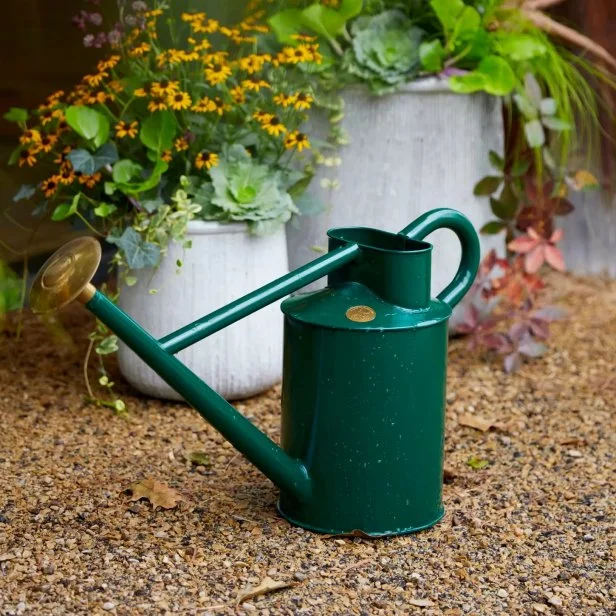
Tools for Watering Plants: Choosing Best Outdoor Watering Can
Importance of Choosing a Quality Watering Can
Choosing the best outdoor watering can is more than picking a tool for watering plants. It’s about finding a reliable partner for your gardening routine. A quality watering can offers the right balance between functionality and ease of use, ensuring your plants get the care they need without causing unnecessary strain on your part.
Here are key reasons why you should invest in a quality watering can:
- Consistent Water Flow: The best outdoor watering can provides a steady and uniform flow of water, mimicking natural rainfall. This is critical for the health of your plants, as it ensures that water reaches the roots without causing soil erosion or disturbing the plant base.
- Comfort During Use: Gardening should not be painful or exhausting. With a well-designed watering can, you can water your plants without discomfort or the risk of injury. This is especially important for gardeners who spend a lot of time tending to their plots.
- Durability: You want a watering can that lasts throughout the seasons. Durable materials and construction means your investment will stand up to regular use and the elements, saving you money in the long term.
- Efficient Watering: A high-quality watering can help you conserve water by allowing for more precise watering. This not only benefits the environment but also ensures that each plant receives the optimal amount of moisture needed.
- Aesthetic Value: Let’s not forget the visual appeal. The best outdoor watering can also serves as a decorative element in your garden, complimenting your outdoor space with its design and style.
Remember, a cheap watering can might save you a few dollars, but investing in a robust and efficient one pays off through healthier plants, easier gardening, and lasting value.
Factors to Consider When Selecting an Outdoor Watering Can
Selecting the best outdoor watering can involves several important factors. Consider not only aesthetics but also how each feature will impact your gardening tasks. Let’s take a closer look at these factors to help you find the watering can that best suits your needs.
Material Durability
The material of a watering can affects its lifespan and usability. Look for materials like galvanized steel or high-density plastic. These options resist corrosion and can handle the elements. Durable materials mean fewer replacements and better value over time.
Capacity and Weight
A can’s size dictates how much water you can carry. But remember, a full watering can get heavy. Aim for a size that balances capacity with what you can comfortably lift and carry. This helps to prevent strain during prolonged gardening sessions.
Design and Comfort
A well-designed watering can make your job easier. Look for cans with a comfortable grip and balance. Features like a contoured handle and a top handle can support your wrist and make pouring effortless.
Spout Length and Type
The length and type of the spout determine how water reaches your plants. A longer spout can water hard-to-reach plants. Some spouts come with detachable roses for a gentle shower. Choose one that matches the precision you need for your plants.
Types of Outdoor Watering Cans
When seeking the best outdoor watering can, you’ll encounter various types crafted from different materials. Each has its own benefits and ideal uses. Let’s explore three common types: plastic watering cans, metal watering cans, and decorative watering cans.
Plastic Watering Cans
Plastic watering cans are lightweight, affordable, and come in many shapes and sizes. They are a go-to for casual gardeners due to their ease of use and low cost. High-density plastics can also offer UV resistance, adding to their lifespan. The drawback is that they may not be as durable as metal options and can become brittle over time.
Metal Watering Cans
Metal watering cans, typically made from galvanized steel or stainless steel, are known for their durability and sturdiness. They can withstand harsh weather and resist rust, especially those with a zinc coating. Metal cans often have a traditional look, fitting well in gardens seeking a classic vibe. However, they are heavier than plastic and can be more expensive.
Decorative Watering Cans
Decorative watering cans serve a dual purpose. They provide practicality while also adding an aesthetic touch to your garden. These cans may feature unique designs, colors, and finishes. While they can be fully functional, their primary focus is often on style rather than professional-grade durability or ergonomics. They make great gifts for gardening enthusiasts who appreciate a beautiful tool.
Features to Look For in the Best Watering Cans
When shopping for the best outdoor watering can, you should focus on features that enhance functionality and user experience. Here are some must-have features that make a watering can stand out among the rest.
Ergonomic Handles
Ergonomic handles are a game-changer for comfort and ease of use. They reduce hand fatigue and make carrying even a full can feel more balanced and less cumbersome. When the grip feels right, watering becomes a more enjoyable task.
Detachable Roses and Sprinklers
The versatility of a watering can is greatly improved with detachable roses and sprinklers. These allow for a gentle rain-like stream or a more focused pour. Depending on your plant’s needs, being able to switch between these modes is incredibly useful.
UV Resistance and Frost Proofing
If your watering can will spend a lot of time outdoors, it should resist UV rays and frost. UV-resistant materials prevent the can from weakening and cracking due to sun exposure. Frost-proofing is essential to ensure the can doesn’t crack or break when temperatures drop. These features extend the life of your watering can, making it a dependable tool through all seasons.
Top Rated Outdoor Watering Cans on the Market
Finding the best outdoor watering can means looking for top-rated products that gardeners trust. Here are some top performers that gardeners consistently rate highly for their quality, durability, and ergonomic design.
Fiskars Easy Pour Watering Can
This can is known for its lightweight design and easy-to-pour spout. With an ergonomic handle, it allows for comfortable watering, even when full. It has a large capacity, so you can water more plants with fewer trips.
Bloem Deluxe Watering Can
The Bloem Deluxe combines function with style. It features a removable sprinkle nozzle for a gentle shower and is made with UV-stabilized plastic to resist sun damage. Its well-balanced design makes it easy to carry and use.
Gardman Galvanized Steel Watering Can
For those who prefer metal cans, the Gardman is a great choice. Made from durable galvanized steel, it stands up to rough weather. Its long spout provides precise watering and has a corrosion-resistant coating.
Haws Heritage Watering Can
The Haws Heritage is a classic. It’s crafted from high-quality plastic, making it both lightweight and hardy. Its iconic design includes a brass-faced rose for fine spray and a comfortable handle.
Remember, the best outdoor watering can for you depends on your specific needs. Consider capacity, durability, and how it feels in your hand. These top-rated models offer a great start to finding your perfect gardening companion.
Maintaining Your Outdoor Watering Can
To keep your best outdoor watering can in top shape, regular maintenance is crucial. Here’s what you need to know.
Cleaning and Storing
Always empty your watering can after each use. Rinse it with clean water to remove dirt and debris. For detailed cleaning, use mild soap and a scrub brush. Avoid harsh chemicals that can damage the can’s material. After cleaning, dry your watering can thoroughly to prevent mold growth.
Store your watering can upside down in a dry, shaded area. This ensures that no water remains inside, which could lead to rust or frost damage. If you have a detachable rose or sprinkler, take it off and store it separately. Keep these tips in mind to extend your watering can’s life.
Preventing Rust and Wear
For metal watering cans, moisture is the main cause of rust. Always dry your can well after use. To prevent rust, you can apply a clear coat of rust-resistant spray. Just make sure it’s safe for plants.
For plastic cans, avoid prolonged sun exposure to prevent UV damage. Store them away from extreme temperatures and direct sunlight. With these care strategies, your watering can will remain a reliable tool for many seasons.
Final Tips for Watering Your Plants Effectively
To ensure your plants thrive, effective watering is essential. Keep these tips in mind when using your best outdoor watering can:
Choose The Right Time of Day
Water early in the morning or late in the afternoon. This reduces water evaporation and helps plants absorb more moisture.
Observe Your Plants
Look at your plants. If they droop or the soil feels dry, it’s time to water. Over-watering is as harmful as under-watering, so be observant.
Water at the Base
Pour water near the plant base. This ensures the roots get water, not just the leaves. It lowers the risk of leaf diseases too.
Use The Right Amount
Give enough water to reach deep roots. This encourages growth and strengthens your plants. Avoid shallow watering that doesn’t reach deeper roots.
Be Consistent
Water regularly. Stick to a schedule. Consistent watering helps establish a routine, beneficial for plant health.
By following these simple tips, you’ll water your plants effectively, leading to a lush, vibrant garden.
